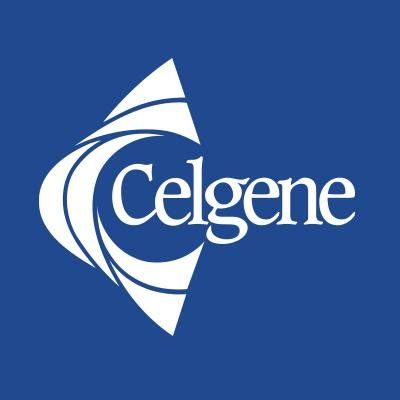预约演示
更新于:2025-05-07
XBP1
更新于:2025-05-07
基本信息
别名 Tax-responsive element-binding protein 5、TREB-5、TREB5 + [7] |
简介 Functions as a transcription factor during endoplasmic reticulum (ER) stress by regulating the unfolded protein response (UPR). Required for cardiac myogenesis and hepatogenesis during embryonic development, and the development of secretory tissues such as exocrine pancreas and salivary gland (By similarity). Involved in terminal differentiation of B lymphocytes to plasma cells and production of immunoglobulins (PubMed:11460154). Modulates the cellular response to ER stress in a PIK3R-dependent manner (PubMed:20348923). Binds to the cis-acting X box present in the promoter regions of major histocompatibility complex class II genes (PubMed:8349596). Involved in VEGF-induced endothelial cell (EC) proliferation and retinal blood vessel formation during embryonic development but also for angiogenesis in adult tissues under ischemic conditions. Functions also as a major regulator of the UPR in obesity-induced insulin resistance and type 2 diabetes for the management of obesity and diabetes prevention (By similarity).
Plays a role in the unconventional cytoplasmic splicing processing of its own mRNA triggered by the endoplasmic reticulum (ER) transmembrane endoribonuclease ERN1: upon ER stress, the emerging XBP1 polypeptide chain, as part of a mRNA-ribosome-nascent chain (R-RNC) complex, cotranslationally recruits its own unprocessed mRNA through transient docking to the ER membrane and translational pausing, therefore facilitating efficient IRE1-mediated XBP1 mRNA isoform 2 production (PubMed:19394296, PubMed:21233347). In endothelial cells (EC), associated with KDR, promotes IRE1-mediated XBP1 mRNA isoform 2 productions in a vascular endothelial growth factor (VEGF)-dependent manner, leading to EC proliferation and angiogenesis (PubMed:23529610). Functions as a negative feed-back regulator of the potent transcription factor XBP1 isoform 2 protein levels through proteasome-mediated degradation, thus preventing the constitutive activation of the ER stress response signaling pathway (PubMed:16461360, PubMed:25239945). Inhibits the transactivation activity of XBP1 isoform 2 in myeloma cells (By similarity). Acts as a weak transcriptional factor (PubMed:8657566). Together with HDAC3, contributes to the activation of NFE2L2-mediated HMOX1 transcription factor gene expression in a PI(3)K/mTORC2/Akt-dependent signaling pathway leading to EC survival under disturbed flow/oxidative stress (PubMed:25190803). Binds to the ER stress response element (ERSE) upon ER stress (PubMed:11779464). Binds to the consensus 5'-GATGACGTG[TG]N(3)[AT]T-3' sequence related to cAMP responsive element (CRE)-like sequences (PubMed:8657566). Binds the Tax-responsive element (TRE) present in the long terminal repeat (LTR) of T-cell leukemia virus type 1 (HTLV-I) and to the TPA response elements (TRE) (PubMed:1903538, PubMed:2196176, PubMed:2321018, PubMed:8657566). Associates preferentially to the HDAC3 gene promoter region in a static flow-dependent manner (PubMed:25190803). Binds to the CDH5/VE-cadherin gene promoter region (PubMed:19416856).
Functions as a stress-inducible potent transcriptional activator during endoplasmic reticulum (ER) stress by inducing unfolded protein response (UPR) target genes via binding to the UPR element (UPRE). Up-regulates target genes encoding ER chaperones and ER-associated degradation (ERAD) components to enhance the capacity of productive folding and degradation mechanism, respectively, in order to maintain the homeostasis of the ER under ER stress (PubMed:11779464, PubMed:25239945). Plays a role in the production of immunoglobulins and interleukin-6 in the presence of stimuli required for plasma cell differentiation (By similarity). Induces phospholipid biosynthesis and ER expansion (PubMed:15466483). Contributes to the VEGF-induced endothelial cell (EC) growth and proliferation in a Akt/GSK-dependent and/or -independent signaling pathway, respectively, leading to beta-catenin nuclear translocation and E2F2 gene expression (PubMed:23529610). Promotes umbilical vein EC apoptosis and atherosclerotisis development in a caspase-dependent signaling pathway, and contributes to VEGF-induced EC proliferation and angiogenesis in adult tissues under ischemic conditions (PubMed:19416856, PubMed:23529610). Involved in the regulation of endostatin-induced autophagy in EC through BECN1 transcriptional activation (PubMed:23184933). Plays a role as an oncogene by promoting tumor progression: stimulates zinc finger protein SNAI1 transcription to induce epithelial-to-mesenchymal (EMT) transition, cell migration and invasion of breast cancer cells (PubMed:25280941). Involved in adipocyte differentiation by regulating lipogenic gene expression during lactation. Plays a role in the survival of both dopaminergic neurons of the substantia nigra pars compacta (SNpc), by maintaining protein homeostasis and of myeloma cells. Increases insulin sensitivity in the liver as a response to a high carbohydrate diet, resulting in improved glucose tolerance. Improves also glucose homeostasis in an ER stress- and/or insulin-independent manner through both binding and proteasome-induced degradation of the transcription factor FOXO1, hence resulting in suppression of gluconeogenic genes expression and in a reduction of blood glucose levels. Controls the induction of de novo fatty acid synthesis in hepatocytes by regulating the expression of a subset of lipogenic genes in an ER stress- and UPR-independent manner (By similarity). Associates preferentially to the HDAC3 gene promoter region in a disturbed flow-dependent manner (PubMed:25190803). Binds to the BECN1 gene promoter region (PubMed:23184933). Binds to the CDH5/VE-cadherin gene promoter region (PubMed:19416856). Binds to the ER stress response element (ERSE) upon ER stress (PubMed:11779464). Binds to the 5'-CCACG-3' motif in the PPARG promoter (By similarity). |
关联
4
项与 XBP1 相关的药物作用机制 CD138抑制剂 [+2] |
在研机构 |
非在研适应症- |
最高研发阶段临床2期 |
首次获批国家/地区- |
首次获批日期1800-01-20 |
靶点 |
作用机制 XBP1抑制剂 |
在研适应症 |
非在研适应症- |
最高研发阶段临床前 |
首次获批国家/地区- |
首次获批日期1800-01-20 |
作用机制 NCOA4 modulators [+1] |
在研机构 |
原研机构- |
非在研适应症- |
最高研发阶段临床前 |
首次获批国家/地区- |
首次获批日期1800-01-20 |
5
项与 XBP1 相关的临床试验NCT04634747
A Single-Arm, Open-Label, Multi-Center Phase II Study to Evaluate the Combination of PVX-410 + Pembrolizumab + Chemotherapy for Frontline Therapy of Metastatic, PD-L1+ Triple-Negative Breast Cancer (TNBC) in HLA-A2-Positive Patients
Evaluating the combination of the investigational, multi-peptide cancer vaccine PVX-410 in combination with pembrolizumab and chemotherapy in treatment naive patients with metastatic, triple negative breast cancer who are PDL1 and HLA A2 positive.
开始日期2022-04-30 |
申办/合作机构 |
NCT03362060
A Phase 1b Study of Safety and Immune Response to PVX-410 Vaccine Alone and in Combination with Pembrolizumab in HLA-A2+ Patients with Metastatic Triple Negative Breast Cancer (TNBC)
This research study is studying immunotherapy as a possible treatment for metastatic Triple Negative Breast Cancer (TNBC) in participants who are HLA-A2+.
The drugs involved in this study are:
* PVX-410
* Pembrolizumab
* Hiltonol
* Montanide
The drugs involved in this study are:
* PVX-410
* Pembrolizumab
* Hiltonol
* Montanide
开始日期2017-12-12 |
申办/合作机构 |
NCT02886065
A Phase 1b Study of PVX-410, a Multi-Peptide Cancer Vaccine, and Citarinostat (CC-96241), a Histone Deacetylase Inhibitor (HDAC) With and Without Lenalidomide for Patients With Smoldering Multiple Myeloma
This research study is studying a targeted therapy as a possible treatment for Smoldering Multiple Myeloma.
The following intervention will be involved in this study:
Lenalidomide
Citarinostat (CC-96241)
PVX-410
The following intervention will be involved in this study:
Lenalidomide
Citarinostat (CC-96241)
PVX-410
开始日期2017-03-07 |
申办/合作机构 |
100 项与 XBP1 相关的临床结果
登录后查看更多信息
100 项与 XBP1 相关的转化医学
登录后查看更多信息
0 项与 XBP1 相关的专利(医药)
登录后查看更多信息
3,565
项与 XBP1 相关的文献(医药)2025-12-01·Molecular Biology Reports
Unraveling the crucial role of UPR pathway in rat brain development
Article
作者: Shan, Ran ; Dai, Huimin ; Zou, Nian ; Wang, Ajun ; Li, Nan ; Ren, Siyu ; Jiang, Tongcui ; Jiang, Yan
2025-12-01·Immunologic Research
A comprehensive analysis of scRNA-Seq and RNA-Seq unveils B cell immune suppression in the AAV-loaded brain
Article
作者: Shu, Wenying ; Luo, Yuanbo ; Jin, Tingting ; Xue, Lu ; Wang, Yaoxuan ; Wang, Zhaoyan ; Wu, Shunyu ; Sun, Jiayu ; Zhu, Yuting ; Li, Xiang
2025-07-01·The Journal of Nutritional Biochemistry
Folic acid intervention ameliorates hepatic steatosis after long-term alcohol exposure by alleviating endoplasmic reticulum stress
Article
作者: Zhao, Huichao ; Ma, Yiqing ; Du, Ronghuan ; Wang, Bin ; Zhang, Huaqi ; Liu, Man ; Lan, Tongtong ; Xue, Meilan ; Liang, Hui
23
项与 XBP1 相关的新闻(医药)2024-11-08
·奇点网
*仅供医学专业人士阅读参考还记得不久前奇点糕提过,化疗“老将”紫杉醇其实能成为免疫治疗的好帮手,通过多种机制增效免疫治疗,但实话说,奇点糕可没指望癌细胞们见到免疫治疗和紫杉醇就乖乖束手就擒,不然三阴性乳腺癌(TNBC)之类的免疫“冷肿瘤”,早就被联合治疗拿下了,不会到现在还是预后极差、让关键临床研究常常失利的顽敌。问题来了,为什么会这样呢?近日,得克萨斯大学MD安德森癌症中心陈曦团队在《细胞》发表了最新研究成果,首次揭示内质网应激感受器IRE1α激酶可通过沉默双链RNA(dsRNA)抑制细胞焦亡(pyroptosis),限制紫杉烷类化疗药诱导dsRNA产生对固有免疫应答的刺激作用,从而帮TNBC在免疫+化疗联合治疗面前实现免疫逃逸。一图总结论文核心内容研究者们首先分析了多个TNBC关键临床研究和小样本队列数据,发现在接受紫杉烷类化疗(多西他赛或白蛋白结合型紫杉醇)的患者中,XBP1等IRE1α的靶基因表达水平与肿瘤浸润淋巴细胞(TILs)和CD8+T细胞数量均呈负相关,这提示IRE1α的核糖核酸酶(RNase)活性,可能影响紫杉烷类化疗应该带来的免疫刺激作用。接下来,研究者们用在研的IRE1α选择性小分子抑制剂证实了以上推论,即多西他赛单独处理,并不能有效激活存在Trp53突变的小鼠TNBC肿瘤免疫微环境,但再序贯用IRE1α抑制剂处理或二者联合治疗,就可有效放大多西他赛的免疫刺激效应,使大量TILs和CD8+T细胞浸润到肿瘤,让微环境成功由冷变热,且浸润的TILs和CD8+T细胞普遍存在PD-L1、TIM-3等免疫检查点的高表达,趁此机会使用免疫治疗就能进一步放大疗效。IRE1α的RNase活性会限制紫杉烷类化疗的免疫刺激作用虽说主导这些免疫应答的当然是T细胞,但对治疗前后免疫细胞变化的分析显示,首先响应IRE1α抑制剂和多西他赛联合治疗的,是以1型经典树突状细胞(cDC1s)为代表的抗原呈递细胞,它们会在多西他赛的作用下被募集和激活,随后交叉致敏CD8+T细胞激活免疫应答,但IRE1α抑制剂却似乎不能直接影响cDC1s和CD8+T细胞,它实际影响的目标是癌细胞,用短发夹RNA(shRNA)沉默癌细胞的Ire1α的效果与IRE1α抑制剂完全相同。同时,研究者们观察到IRE1α抑制剂+多西他赛联合治疗,显著上调了小鼠体内白介素-1α水平,提示癌细胞内的炎症小体被激活,而炎症小体又会激活caspase-1蛋白酶来切割底物蛋白GSDMD,这正是诱导细胞焦亡的经典通路,也是联合治疗激活免疫应答的关键;而既往研究已经显示,多西他赛可诱导NLRP3炎症小体激活[2],同样符合本次实验所见。所以IRE1α抑制剂的助力,使多西他赛重新找回了诱导细胞焦亡的能力,而IRE1α抑制剂的起效原因则在于dsDNA:在IRE1α的RNase活性正常时,它会把多种dsDNA作为底物切割,与未突变的p53构成阻止dsDNA在细胞内积聚的双重防火墙;而多西他赛诱导NLRP3炎症小体激活、进而触发细胞焦亡同样需要依赖dsDNA的积聚。IRE1α切割dsDNA(又被称为IRE1α依赖性衰解/RIDD)是其影响多西他赛作用的关键而且研究者们发现,能够激活NLRP3炎症小体的还是一种特殊的dsRNA——Z-RNA,它与相应的感受器ZBP1结合,才能介导后续一系列的免疫调节效应,因此抑制IRE1α再加上TNBC中突变频率高达85%的p53突变,都是紫杉烷类正向调节免疫应答的前提条件,甚至可以说上述调节机制就是紫杉烷类独有的,这也算是解开了一个TNBC联合治疗长期以来的谜题,以后的晚期TNBC一线治疗或许就能看到免疫+紫杉烷+IRE1α抑制剂方案了。参考文献:Xu L, Peng F, Luo Q, et al. IRE1α silences dsRNA to prevent taxane-induced pyroptosis in triple-negative breast cancer[J]. Cell, 2024.本文作者丨谭硕
免疫疗法
2024-10-14
摘要:多发性骨髓瘤(MM)是一种以骨髓中浆细胞积累为特征的血液系统癌症。尽管治疗取得了进展,但大多数患者中的MM仍然无法治愈。与MM相关的免疫失调促进了疾病的进展,这促使研究者探索免疫疗法来对抗这种疾病。免疫疗法研究的一个领域是设计骨髓瘤疫苗疗法,以逆转与肿瘤相关的免疫抑制,并引发针对肿瘤的特异性免疫反应,有效地针对MM细胞。本文回顾了MM的疫苗免疫疗法,按抗原类型和递送方法对研究结果进行分类。抗原包括特异性抗原(Id)、肿瘤相关抗原(TAA)、肿瘤特异性抗原(TSA)和整个肿瘤裂解物。到目前为止,骨髓瘤疫苗在临床上显示出有限的疗效。然而,进一步的研究至关重要,以优化各个方面,包括抗原和患者选择、疫苗的时机和顺序,以及与新兴MM治疗的合理组合。
1.引言
多发性骨髓瘤(MM)是一种血液系统恶性肿瘤,其特征是克隆性浆细胞在骨髓(BM)中积累,并分泌单克隆免疫球蛋白,导致被称为CRAB(高钙血症、肾功能不全、贫血和骨病变)的特征性症状。尽管出现了许多新的治疗方法显著改善了治疗效果,但MM在很大程度上仍然无法治愈,对于大多数晚期患者来说,这种疾病仍然是致命的。越来越多的研究关注于利用宿主免疫系统针对MM细胞的免疫疗法。由于抗原呈递无效和效应细胞功能障碍,MM与免疫失调相关,创造了一个促进疾病进展的免疫抑制环境。研究的一个领域是设计骨髓瘤疫苗疗法。癌症疫苗接种是一种旨在激活免疫系统以识别和对抗癌细胞的治疗性方法。这些疫苗可以作为预防措施,称为预防性疫苗,或者作为已经诊断出癌症的个体的治疗选择,称为治疗性疫苗。任何癌症疫苗所针对的抗原的选择对其临床效果至关重要。肿瘤抗原被分为两大类:肿瘤相关抗原(TAAs)和肿瘤特异性抗原(TSAs)。TAAs是自身抗原,它们在肿瘤细胞中要么优先表达,要么异常表达,但也可能在正常细胞中以某种水平存在。TSAs,也称为新抗原,包括仅由癌细胞编码的抗原,并且是肿瘤特异性的,能引发高亲和力T细胞反应。疫苗被分为共享和个性化疫苗。共享抗原是公共抗原,可以由相对常见的人类白细胞抗原(HLA)等位基因在患者中呈递。这些疫苗是现成的免疫疗法的有希望的候选者。另一方面,个性化癌症疫苗由于高通量基因测序、质谱(MS)和生物信息学的进步而最近获得了更多的关注,这些技术使得能够识别HLA结合肽和预测独特的个性化新抗原。此外,癌症疫苗可以通过各种平台递送,如肽疫苗、RNA疫苗、DNA疫苗、病毒疫苗和抗原呈递细胞(APC)/树突细胞(DC)疫苗。如今,大多数正在临床研究中的疫苗涉及递送肿瘤抗原与佐剂或其他共刺激因子的组合。佐剂是癌症疫苗的重要组成部分,因为它们通过激活先天免疫途径来增强免疫反应。各种佐剂,如Toll样受体(TLR)激动剂和细胞因子被用来提高癌症疫苗的效果。有关癌症疫苗的更详细信息,请参考文献3-7。本文旨在回顾针对MM的疫苗免疫疗法的主要发现,根据抗原类型及其递送方式(无论是肽、蛋白质、DNA或DC基础疫苗)进行分类。讨论的肿瘤抗原包括特异性抗原(Id)、TAA、TSA和整个肿瘤裂解物。在MM中,恶性浆细胞分泌含有称为Id的肿瘤特异性抗原决定簇的单克隆免疫球蛋白(副蛋白)。Id是通过B细胞成熟和体细胞超突变期间的基因重排形成的。尽管Id抗原是TSA的一个子集,但由于研究针对骨髓瘤Id抗原的疫苗的历史意义,本综述中包括了对这些抗原的专门部分。
2.特异性疫苗
2.1.基于Id蛋白/肽或DNA的疫苗
Id疫苗的最初研究之一可以追溯到1995年Kwak等人的一项研究,他们用接受者血浆中的骨髓瘤免疫球蛋白免疫了一个健康的兄弟姐妹BM供体。检测到淋巴增殖反应,恢复了对骨髓瘤Id具有独特特异性的接受者CD4+ T细胞系,这证明了用Id免疫可能代表一种增强特异性抗肿瘤效应的新策略。后来,更多的研究调查了Id疫苗作为治疗策略的潜力。一组I-III期MM患者接受了用明矾作为佐剂的自体血清M组分的重复免疫。虽然在三名患者中成功,但引起的免疫反应幅度适中且短暂。随后的研究引入了免疫原性载体蛋白,如钥孔帽螺血蓝蛋白(KLH)或丝状噬菌体,单独或与粒细胞-巨噬细胞集落刺激因子(GM-CSF)、白细胞介素(IL)-2、IL-12等佐剂一起使用,以增强Id蛋白的抗肿瘤免疫。尽管这些策略能够引起肿瘤特异性免疫反应,但临床反应适中。例如,在Osterborg等人的研究中,Id疫苗与GM-CSF一起用于五名II期MM患者。所有患者都发展了Id特异性T细胞免疫,但只有一名个体的M组分浓度显著降低。Massaia等人用KLH和低剂量的佐剂细胞因子GM-CSF或IL-2对接受高剂量化疗(HDT)后最小残留病(MRD)的患者进行了疫苗接种。在75%的患者中记录了特异性T细胞反应,但没有减少肿瘤负担。另一项研究探讨了在HDT和外周血祖细胞输注后的第一个缓解期使用与KLH结合的特异性蛋白和低剂量GM-CSF作为维持治疗。回顾性病例匹配分析显示,疫苗组和用干扰素(IFN)-α和/或地塞米松作为维持治疗的对照组之间的生存和无进展生存(PFS)持续时间相似。
在非随机的I期临床试验中,更多的努力被投入到研究基于Id DNA的疫苗,该疫苗编码患者特异性的单链可变片段,或将Id与破伤风毒素的片段C(FrC)链接。14名患者接受了至少在自体干细胞移植(ASCT)/高剂量治疗(HDT)后6个月开始的疫苗接种。在为期52周的研究期间,10名患者(71%)的血清副蛋白无法检测到、减少或保持稳定,而11名患者(79%)维持了持续的完全反应(CR)/部分反应(PR)。此外,对于13名患者,中位无进展生存期(TTP)为38.0个月。然而,由于之前的ASCT/HDT,很难区分疫苗效果和延迟治疗反应,因为在疫苗接种开始后,7名、6名和1名患者已经分别达到了CR、PR和稳定病状(SD)。在Qazilbash等人最近发表的一项研究中,采用了另一种Id疫苗接种策略。在这项随机的2期试验中,采用了初免和增强策略,通过收集已经用患者特异性Id-KLH在体内初免的T淋巴细胞,然后使用CD3/CD28磁珠在体外激活这些T细胞,并在HDT和自体造血干细胞移植(AHCT)后重新注入这些细胞,并随后增强剂量的指定疫苗。尽管疫苗引发了持续至+180天的强烈免疫反应,但与仅接种KLH的对照组相比,接种Id-KLH的组别在临床上没有益处。表1显示了使用Id蛋白/肽或基于DNA的Id疫苗的试验总结。
2.2.基于DC的Id疫苗
专业的APCs,DCs,在启动和调节先天和适应性免疫反应中发挥着关键作用。通过利用它们增强宿主效应器和记忆CD8 T细胞反应的能力,这些反应对于抗肿瘤免疫至关重要,DC疫苗已成为癌症免疫疗法的主要策略之一。DC疫苗首次在MM的Id抗原背景下进行了测试。历史上,基于Id的DC疫苗在MM试验中已经测试了十多年,但没有明确的临床益处。已经提出了几种优化方法,用于生成、给药途径和疫苗接种的时间。原始方法涉及从通过白细胞分离术收集的外周血液中分离DCs,随后进行密度梯度离心。随后,添加细胞因子,即GM-CSF和IL-4,成为培养要么粘附的单核外周血细胞,CD34+或CD14+细胞的标准实践。在Id脉冲后提出了各种成熟方案以增强有效性,包括单独暴露于肿瘤坏死因子α(TNF-α),TNF-α和IL1-B,CD40配体或TNF-α、IL-6、IL-1和前列腺素E2的组合。研究了不同的疫苗接种途径,包括皮下、皮内、静脉内和淋巴结内。在I/II期试验中,Curti等人比较了通过顺序皮下和静脉内途径的Id脉冲DCs。每位患者都作为自己的对照,接受顺序皮下和静脉内给药。结果表明,皮下给药诱导了更强的T细胞反应,表明其在引发免疫反应方面比静脉输注重建。此外,疫苗在不同的患者群体中进行了测试,包括晚期骨髓瘤患者,化疗后的患者,未经预处理的个体,在ASCT后肿瘤负担较低的患者和冒烟型骨髓瘤(SMM)。如上所述,尽管付出了巨大努力,基于Id的DC疫苗并未产生令人满意的临床结果。Wen等人在1998年进行的一项研究是对DC基础Id疫苗针对MM的首批试验之一,涉及一名43岁的晚期难治性骨髓瘤患者。通过一系列密度梯度离心从单核细胞中分离出DCs。尽管临床反应有限,但这项研究通过产生Id特异性免疫反应,证实了体外生成的骨髓瘤DCs的功能能力。后来,通过对DC生成的一些优化,通过培养粘附的单核细胞与GM-CSF和IL-4等细胞因子。在1999年,两名晚期难治性MM患者接受了用Id抗原和KLH装载的自体DC疫苗,并以GM-CSF作为佐剂。结果表明,两名患者都发展了Id特异性T细胞增殖反应,其特征是产生干扰素γ(IFN-g)。然而,在这两名病例中没有临床益处。尽管如此,考虑到这些患者患有晚期疾病,预计疫苗可能不会对这一特定群体产生最佳效果。因此,对免疫系统受损较小或肿瘤负担较低的患者群体进行了额外的试验,预期这可能会增强疫苗的效果。六名早期/早期复发的骨髓瘤患者接种了自体DCs(静脉内)准备如前述研究并装载Id抗原和KLH。然而,只有3名患者的Id血清水平稳定期,2名患者在疫苗接种后疾病进展。在另一项研究中,在26名预期肿瘤负担较低的患者中,在HDT和外周血祖细胞移植(PBPCT)后测试了基于DC的Id疫苗。值得注意的是,只有四名患者发展了Id特异性增殖性T细胞反应。这些免疫反应者中有三名在疫苗接种时处于CR状态。在移植后平均随访30个月,共有17名患者存活。这些发现表明,较低的肿瘤负担可能导致更好的免疫反应。然而,由于缺乏对照组进行比较,将这些结果完全归因于疫苗是具有挑战性的。还在未经治疗的I期患者中进行了基于DC的Id疫苗接种的调查。在这项试验中,九名患者接受了用Id和KLH脉冲的自体单核细胞衍生的DCs。疫苗在56%的患者中导致了T细胞增殖。与其他研究一样,临床反应适中,三名患者的M蛋白略有减少。
为了增强基于DC的Id疫苗的效力,对DC生成进行了优化。在早期的基于DC的疫苗接种研究中,未成熟的DCs被脉冲抗原。然而,未成熟的DCs激活T细胞的能力次优。因此,引入了在成熟诱导细胞因子存在下暴露于抗原的DCs。这首先在5名在HDT后稳定部分缓解的患者中进行了测试。此外,有人建议将给药途径从静脉内改为皮下,以克服与静脉内疫苗接种相关的潜在限制,例如DCs可能在肺、肝和脾等器官中的积累。即使对DC生成进行了修改,并将给药途径转移到皮下,临床效益仍然不明显。此外,将临床反应仅归因于DC疫苗仍然具有挑战性,特别是考虑到化疗/自体HCT后四个月开始的时机。
尽管探索了DC生成、给药途径、疫苗接种时机以及添加免疫原性载体蛋白/佐剂的优化,但未观察到显著结果。Bendandi等人假设缺乏临床意义可能是由于从MM患者获得的DC在数量和质量上的缺陷。因此,他们进行了一项试点研究,其中4名MM患者接受了异体树突细胞(alloDC)随后是Id-KLH。疫苗仅诱导了可检测的抗KLH效应T细胞和B细胞反应,而没有诱导针对肿瘤特异性Id的T细胞增殖。从临床角度来看,结果并不令人印象深刻,一名患者在停止疫苗接种后出现SD,而其中3名患者在研究随访期间进展。表2显示了在MM中使用基于DC的Id疫苗的试验总结。
3.肿瘤相关抗原
3.1.基于肽的TAA疫苗
尽管Id疫苗能诱导可检测的免疫反应,但未能显示出临床效力。这可能归因于高水平循环Id蛋白对T细胞的抑制作用,导致耐受性,以及Id蛋白本身是一个弱抗原的事实。作为Id疫苗的替代品,开发了具有TAA的疫苗。在临床、临床前和体外环境中研究了多种TAA在MM中的作用,如Mucin-1(MUC1)、透明质酸介导的运动受体(RHAMM)、B细胞淋巴瘤2(BCL-2)家族、Wilms肿瘤1(WT1)、X盒结合蛋白1(XBP1)、syndecan-1(CD138)、CS1(SLAM7)、癌症睾丸抗原(CTA)、Dickkopf-1(DKK1)、甲基丙二酸半醛脱氢酶(MMSA-1)、热休克蛋白(HSP)、端粒酶逆转录酶(hTERT)和Survivin。表3显示了在MM中使用TAA作为抗原的试验总结。
糖蛋白MUC1存在于包括MM在内的各种癌症中。ImMucin,一种21肽合成长肽疫苗,在15名骨髓瘤患者的I/II期研究中进行了测试。ImMucin诱导了显著的T细胞反应,并增加了针对MUC1的抗体滴度。然而,临床效力次优,中位PFS为17.5 ± 3.9个月。
RHAMM衍生的肽R3在I/II期研究中作为另一种潜在的血液学恶性肿瘤的免疫原性抗原进行了调查,包括MM。在10名HLA-A2阳性患者中进行的300 mg疫苗的初步研究,包括4名MM患者,显示出积极的临床和免疫学反应。在接受300 mg疫苗的MM患者中,3/4显示出特异性CD8+ T细胞增加,2/4显示出克隆标记减少。然而,有限的样本量需要谨慎得出明确结论。
BCL-2家族蛋白在1期试验中作为MM的另一个靶标抗原进行了研究。复发的MM患者接受了与montanide ISA-51作为佐剂混合的Bcl-2、Bcl-XL和Mcl-1肽的疫苗接种,以及bortezomib。由于肽HLA限制,患者根据他们的HLA-A阳性性接受肽,即HLA-A1、HLA-A2和/或HLA-A3。在7名患者中,3名显示出与基线(疫苗接种前)相比的疫苗诱导的肽抗原特异性T细胞反应。然而,小样本量阻碍了对临床效力的结论性评估。与儿童肾肿瘤Wilms肿瘤相关的WT1基因,作为癌基因和某些正常细胞过程的关键组成部分,发挥着双重作用。它在造血恶性肿瘤和实体癌中高度表达,包括骨髓瘤,其表达随着疾病进展而增加。研究已经鉴定了WT1中的各种表位,可以以人类HLA限制的方式引发WT1特异性细胞毒性T淋巴细胞(CTL)反应。因此,基于WT1肽的免疫疗法可能是恶性疾病患者的一个选项。在Tsuboi等人的案例研究中,一名57岁的耐化疗MM患者每周接受HLA-A*2402限制的9肽WT1肽和montanide ISA51作为佐剂的皮内疫苗接种。疫苗接种后,骨髓癌细胞减少了60%,尿液M蛋白水平从3.6降至0.6 g/天。此外,C-X-C趋化因子受体类型(CXCR)4阳性细胞有显著变化,表明WT1特异性CTLs有效地迁移到肿瘤部位。
为了应对单一抗原肽疫苗的局限性,包括潜在的抗原逃逸和目标抗原的下调,还研究了多肽疫苗。PVX-410是一种基于肽的疫苗,由来自XBP1、CD138和CS1三个不同抗原的4个9肽组成。在一项研究中,22名中度至高风险HLA-A2阳性的SMM患者接受了PVX-410皮下注射和佐剂poly-ICLC,有或没有lenalidomide。PVX-410一致地产生了特定、持久的免疫反应,特别是与lenalidomide一起使用时。然而,总体临床反应仍然适中。单独使用时,所有患者的最佳反应为SD,其中5/12在12个月内进展。在联合治疗组中,一名患者实现了PR,四名患者有最小反应或SD。
DKK1、MMSA-1和HSP作为TAA被研究,它们有潜力作为针对MM的疫苗疗法。DKK1,一个Wingless相关整合位点(Wnt)/β-连环蛋白信号抑制剂,能诱导肽特异性CTLs,这些CTLs能识别并溶解表达HLA-A0201的骨髓瘤细胞。MMSA-1是一种在MM细胞中特异表达的膜蛋白。当与DKK1结合在疫苗中时,它以HLA-A0201限制性方式增强CTL反应,改善存活,并在临床前模型中减轻骨破坏。肿瘤细胞衍生的HSPs,如gp96,已被作为小鼠骨髓瘤的TAA进行研究。来自已建立的小鼠骨髓瘤细胞系的混合HSPs,显示出作为现成疫苗的潜力,有效治疗具有大骨髓瘤肿瘤负担的小鼠,HSP与抗B7H1或抗-IL-10单克隆抗体结合使用。然而,需要进一步的研究来确认它们在临床环境中的效力。
此外,最初在黑色素瘤患者中发现的CTA抗原,由于在正常组织上的有限表达,成为免疫疗法的靶点。Andrade等人的研究表明,骨髓瘤细胞上表达超过六个CTA抗原具有预后价值,与MM患者的较短总生存期(OS)相关。像NY-ESO-1、LAGE-1、MAGE-A1、MAGE-A2、MAGE-A3和MAGE-C1(CT-7)这样的突出CTA抗原已显示出刺激T细胞反应的潜力,使它们成为癌症免疫疗法的候选者。在CTA抗原中,MAGE-A3已在临床环境中进行了测试。在一个案例研究中,一个健康的捐赠者,即患者的同卵双胞胎,用MAGE-A3蛋白和AS02B作为佐剂进行免疫。在同种异体外周血干细胞移植后,将 primed捐赠细胞转移到患者体内。随后,患者接受了额外的MAGE-A3免疫接种,以及第二次外周骨髓单个核细胞输血。MAGE-A3免疫接种耐受性良好,并在两个双胞胎中产生了强大的MAGE-A3特异性抗体、CTLs和T辅助细胞反应。有趣的是,CTL反应针对一个以前未知的HLA-A*6801结合MAGE-A3肽,该肽在最后一次免疫接种后在患者体内保持可检测超过一年。检测到多个T辅助细胞反应,主要反应针对HLA-DR11限制的MAGE-A3表位。令人鼓舞的是,患者在第二次移植后2.5年仍处于缓解状态。这个案例研究表明,这种个性化的免疫治疗方法对MAGE-A3阳性MM患者具有潜在的疗效。在另一项II期研究中,评估了使用MAGE-A3多肽疫苗结合Poly-ICLC和GM-CSF在体内初次免疫,然后体外扩增的自体T细胞的安全性和效力,在27名骨髓瘤患者中。疫苗包括两个HLA-A2限制的类I表位和一个多类II表位。结果显示,在8名可评估的HLA-A2+患者中有7名检测到MAGE-A3特异性CD8 T细胞。此外,在25名患者中有19名产生了能产生细胞因子的疫苗特异性T细胞。2年OS为74%,2年无事件生存期(EFS)为56%。Cohen等人进行了类似的研究,其中13名MM受试者在接受ASCT前后以及早期SCT后疫苗初次自体淋巴细胞输注,接受了重组MAGE-A3和AS15免疫刺激剂。组合免疫疗法在所有受试者中产生了高滴度的体液免疫和持久且强大的抗原特异性CD4+ T细胞反应。然而,中位PFS为27个月,中位OS未达到,表明与标准护理没有差异。
在临床前环境中测试的其他CTA已被建议作为MM的可能免疫疗法靶点。自发的NY-ESO-1抗体和特异性CD8+ T细胞已在NY-ESO-1阳性MM病例中体内检测到。在临床前模型中,研究了一种名为NACH的复杂疫苗,该疫苗基于NY-ESO-1-alum-CpG ODN-HH2。NACH疫苗中使用的Alum-CpG ODN-HH2组合佐剂是一种新型免疫佐剂。疫苗在小鼠MM的预防和治疗模型中显示出有希望的抗肿瘤效果和免疫原性。NACH疫苗抑制了肿瘤生长,在小鼠中显著延长了存活时间。在治疗模型中,接受NACH疫苗的10只肿瘤小鼠中有7只存活至第90天,而对照组的所有小鼠在40天内死亡。LAG-1a是另一个在MM患者中经常表达的CTA抗原,与NY-ESO-1共享高mRNA序列相似性。In silico分析确定了在LAG-1a和NY-ESO-1中存在的七个肽段,这些肽段被不同肿瘤的T淋巴细胞识别。因此,假设针对NY-ESO-1的疫苗可能对表达LAG-1a但不表达NY-ESO-1的肿瘤的MM患者有益。MAGE-C1、SPAN-Xb和SP-17是其他能够引发CTL反应的CTA抗原,使它们成为基于疫苗的免疫疗法MM的靶点。
与Id疫苗类似,基于肽的肿瘤-TAA疫苗的实际应用到临床实践中尚未发生。Rapoport A.P等人的研究比较了54名MM患者中称为hTERT的端粒酶复合体的限速催化亚单位和抗凋亡蛋白Survivin作为目标抗原疫苗与肺炎球菌结合疫苗的免疫原性。HLA-A2阳性的患者(包括任何A2等位基因)被分配到A组,他们接受了hTERT/Survivin疫苗。研究表明,尽管这种多肽肿瘤抗原疫苗的免疫反应频率高于报道的Id疫苗,但TAA仍未达到微生物疫苗所诱导的水平。这表明,为了获得显著的长期临床益处,可能需要对癌症疫苗产生更大规模的免疫反应。
3.2.基于DC的TAA疫苗
使用与肿瘤相关抗原(TAA)相关的基于树突状细胞(DC)的疫苗也被视为替代Id抗原的选择。对12名至少接受了诱导化疗和造血细胞移植/自体造血干细胞移植(HCT/ASCT)后获得最小部分缓解(PR)的II期或III期骨髓瘤患者进行了疫苗接种。通过电穿孔法用MAGE3、Survivin和BCMA装载粘附的CD14+细胞生成DCs,并与或不与KLH一起脉冲。值得注意的是,所有患者都产生了强烈的抗KLH T细胞反应,这表明在高剂量美法仑治疗后免疫恢复,并且在两名患者的迟发型超敏反应活检中检测到了疫苗特异性T细胞。在最后一次随访时,12名患者中有10名在第一次接种后平均25个月(范围9-53个月)仍然存活。在这些患者中,5名病情稳定(SD),5名病情进展。在另一项研究中,进行了DC的mRNA电穿孔,使用装载有CT7、MAGE-A3和WT1的朗格汉斯DC。这些从CD34+造血前体细胞衍生的朗格汉斯型DC被认为是体外对肿瘤抗原的CTLs更具潜力的刺激因子,与单核细胞衍生的DC相比。患者被随机分配在ASCT后100天内接受疫苗或被放置在没有疫苗的对照组。虽然该研究没有足够的能力来评估临床疗效,但治疗反应倾向于接受疫苗的组。在最近发表的一项研究中,Locke及其同事设计了一种针对抗凋亡蛋白Survivin的基于DC的疫苗,在1期临床试验中。通过腺病毒载体工程化DCs以表达包含两个突变的全长Survivin版本(Ad-S),这些突变中和了野生型Survivin的抗凋亡功能。13名新诊断的MM患者,他们没有通过诱导治疗获得CR,接种疫苗的时间是在干细胞收集前7到30天,以及在ASCT后20到34天。疫苗与ASCT联合使用耐受性良好,仅观察到轻微的不良反应。值得注意的是,85%的患者表现出针对Survivin的T细胞反应或抗体反应。7名患者在第+90天表现出增强的临床反应,所有这些都与Survivin特异性免疫反应相关。令人印象深刻的是,在平均4.2年的随访后,这7名患者中有6名保持无病状态。估计的四年无病生存(PFS)为71%,超过了IFM 2009试验的历史数据,该数据大约为4.1年时PFS为50%,针对这类患者群体。Survivin已成为MM中一个显著的TAA。在8项正在进行的MM试验中,有两项专注于开发针对Survivin的疫苗。其中一种疫苗名为TXSVN,它使用了一种减毒的活沙门氏菌株,经过遗传改良以产生Survivin。第二种疫苗是一种基于肽的配方,称为SVN53-67/M57-KLH,源自Survivin蛋白(表4)。
4.肿瘤特异性抗原
4.1.基于肽的TSA疫苗
尽管某些关于TAA的研究显示出希望,但由于每个临床试验中患者数量有限,总体评估具有挑战性。需要对更大的队列进行进一步研究,以得出关于基于TAA的免疫疗法疗效的确定性结论。此外,由于它们作为非突变的自身抗原的地位,一般来说TAA可能表现出低免疫原性,这归因于中枢T细胞耐受的影响。因此,TSA,也称为新抗原,似乎是疫苗免疫疗法的另一种靶标抗原。癌细胞中的体细胞突变可以产生新的蛋白质序列,这些序列可以被APCs作为新抗原呈现给宿主免疫系统。肿瘤新抗原是免疫疗法的极好靶标,因为它们在癌症组织中特异性表达。通过下一代测序,在184名MM患者中识别出的新抗原景观,揭示了在复发患者中的NRAS、KRAS和干扰素调节因子4(IRF4)基因中共享的新抗原,以及在新诊断患者中的KRAS,支持在具有此类突变的MM患者中使用基于新抗原的疫苗的可能性。在MAPK途径中的扰动,特别是KRAS、NRAS和BRAF中的突变,在相当一部分MM病例中观察到,RAS突变在多达70%的复发/难治性病例中被检测到。这些与MAPK激活相关的突变,可能会影响预后,有助于从前期状况向骨髓瘤的转变,以及从髓内到髓外疾病的转变,随着疾病的进展,其患病率越来越高。针对共享的新抗原,如与RAS突变相关的新抗原,正在临床试验中探索,例如我们小组正在进行的研究,使用TG01癌症疫苗在高风险SMM或MM患者中(表4),在≥1线治疗后有可测量疾病。TG01由7种合成肽组成,模仿RAS蛋白的突变形式,在胰腺癌患者中显示出有希望的结果。TG01研究的主要终点是安全性,关键的次要终点包括对疫苗的免疫反应、总体反应率、OS和PFS。
另一种基于新抗原的疫苗是PGV-001。PGV-001是一种个性化的基因疫苗,针对基于患者HLA分型的多达10个预测的个人肿瘤新抗原。在辅助治疗环境中测试了PGV-001,包括3名接受了ASCT的MM患者在内的13名多种癌症类型的患者。疫苗肽在27周的过程中与聚肌胞(poly-ICLC)和破伤风辅助肽一起给药。一名患者失去了随访,但在剩下的12名患者中,平均随访了925天,其中四名没有疾病证据,四名接受了后续的治疗线,四名已经去世。值得注意的是,只有两名去世的患者有记录的恶性肿瘤复发。这篇摘要中没有描述患者的详细信息以及他们中哪些是MM患者。免疫监测免疫原性正在进行中。然而,初步分析表明诱导了针对新抗原的CD4和CD8 T细胞扩增。
如前所述,TSA由于缺乏胸腺选择和中枢耐受,可以激活高亲和力T细胞。尽管对Id有显著的关注,但由于其在骨髓瘤中的丰富性,显示出有限的临床疗效,对骨髓瘤中除了Id之外的其他新抗原的研究仍然有限。进一步的研究对于评估它们作为骨髓瘤疫苗治疗中的靶标抗原的潜力至关重要。
5.整个肿瘤抗原
5.1.基于DC的疫苗
单一抗原特异性疫苗容易受到因抗原表达下调而导致的免疫逃逸的影响。或者,也探索了整个细胞靶标作为一种策略,该策略寻求建立多克隆免疫反应。这样的疫苗可能包括广泛的抗原,包括新抗原。这在骨髓瘤中特别相关,因为存在大量的肿瘤突变负担。对664名新诊断的骨髓瘤患者的研究发现,每个患者的平均体细胞和错义突变负荷分别为405.84和63.90个突变。突变和新抗原负担之间存在正相关。此外,高剂量美法仑治疗,这是ASCT前的标准治疗,与高突变负担相关,并且可能在骨髓瘤患者的复发时有更多的新抗原。
Rosenblatt等人通过化学融合患者衍生的骨髓瘤细胞与自体DCs开发了一种肿瘤疫苗。这种疫苗的优势在于可能在DC介导的共刺激的背景下呈现多样化的骨髓瘤相关抗原。融合细胞是通过将DCs和骨髓瘤细胞与聚乙二醇共培养而创建的。在17名患者中测试了DC融合疫苗,其中大多数患有晚期疾病。疫苗接种耐受性良好,并在大多数评估的患者中导致与患者自己的骨髓瘤细胞反应的淋巴细胞扩增,以及记录的体液反应。晚期疾病的患者经历了疾病稳定,三名患者在12、25和41个月时分别显示持续的SD。在当前研究中,调节性T细胞水平在疫苗接种期间保持稳定。同一疫苗在ASCT后的患者中进一步测试,假设自体移植为融合疫苗提供了一个最佳环境,因为肿瘤细胞减少和调节性T细胞耗竭导致的免疫环境增强。该研究取得了有希望的结果,47%的患者实现了CR/近CR(nCR)作为最佳反应,78%的患者至少实现了VGPR。值得注意的是,近35%的CR发生在移植后超过100天,在接种疫苗后。尽管可能会观察到化疗的延迟效应,但在没有维持治疗的情况下,大量的晚期反应可能暗示了疫苗介导的效应。基于这些结果,该团队被鼓励检查融合疫苗与来那度胺作为自体HCT后维持治疗的联合疗效。然而,与来那度胺一起的DC/MM融合疫苗接种并没有在移植后1年显著增加CR率,但与循环MM反应性淋巴细胞的显著增加相关,这表明了肿瘤特异性免疫。该团队进行了另一项临床试验,涉及接受自体移植的MM患者,他们在接受DC/骨髓瘤融合细胞疫苗后接受了抗程序性细胞死亡蛋白1(PD-1)抗体(Pidilizumab)的联合治疗,目的是克服肿瘤细胞逃避宿主免疫的免疫抑制环境。这项试验涉及22名患者,并表明这种组合可以诱导抗肿瘤免疫反应,并且在一部分患者中,在移植后完全根除可测量的疾病。移植后,调节性T细胞水平显著下降,并在整个免疫治疗期间保持低水平。六名患者达到了VGPR的最佳反应,六名患者达到了nCR/CR。从移植起的中位PFS为19个月,随访正在进行中(表4)。其他整个细胞裂解物,如GVAX和DCOne疫苗,作为现货疫苗进行了测试,具有多样化的抗原库。MM-GVAX是一种疫苗,其中两个已建立的异质性骨髓瘤细胞系,H929和U266,与K562细胞系(GVAX®)一起给药,该细胞系被改造为过表达GM-CSF。H929表现出t(4;14),并且NRAS突变,U266涉及BRAF和TP53途径的几个突变。注册的患者血清/尿液免疫固定阳性,并维持了至少4个月的nCR。在2021年的出版物中,15名患者中有8名(53.3%)加深了治疗反应并实现了真正的CR。中位OS为7.8年。MM-GVAX触发了克隆T细胞扩增和细胞因子反应,在所有患者中持续了长达7年。这项试验正在进行中(表4)。
DCOne是另一种现成的肿瘤疫苗,它源自人类急性髓系白血病(AML)细胞系,可以分化为完全功能的DCs的表型,并内源性地表达肿瘤相关抗原(TAA)。这些抗原与HLA分子以及对T细胞激活至关重要的各种共刺激分子一起呈现。尽管最初作为AML的癌症疫苗进行工程化,DCOne表达的肿瘤抗原也存在于包括MM在内的多种血液系统恶性肿瘤中。使用DCOne疫苗治疗MM导致激活的CD8+ T细胞扩增,这些细胞表达干扰素-γ和穿孔素。此外,将患者的肿瘤细胞与外周血单个核细胞和DCOne共培养,诱导了针对自体MM细胞的细胞毒性T淋巴细胞介导的杀伤,突出了DCOne在骨髓瘤治疗中的潜力。表5显示了使用整个肿瘤抗原治疗MM的试验总结。
6.结论和未来展望
尽管进行了广泛的研究,肿瘤疫苗尚未纳入骨髓瘤治疗。多年来,主要的研究重点是Id疫苗,这些疫苗偶尔产生免疫反应,但临床效果有限。随后的调查在临床试验中探索了不同的抗原靶标。然而,在早期试验中对各种抗原进行广泛测试,并限制了患者群体,这在建立明确结论方面带来了挑战。此外,即使在同一类型的抗原研究之间进行直接比较,也会因患者特征(如年龄、细胞遗传学/风险因素)的差异以及疫苗接种时的疾病阶段而受到阻碍。此外,许多疫苗研究是在化疗构成标准治疗的时期进行的,更多关注使用疫苗单独来根除肿瘤。然而,将疫苗接种与新建立的治疗方法(如IMiDs、蛋白酶体抑制剂和新一代免疫疗法,如嵌合抗原受体T(CAR-T)细胞和双特异性抗体)结合起来,尚未得到解决。
总的来说,疫苗的复杂性以及骨髓瘤作为疾病的复杂性,为将疫苗整合到骨髓瘤治疗策略中带来了挑战。疫苗治疗是复杂的,需要彻底的实验。这包括选择肿瘤抗原、制定疫苗、确定传递工具,决定给药途径和频率、确定疫苗接种的时间,以及考虑骨髓瘤肿瘤微环境的复杂性(图1)。优化所有这些因素可能是提高临床效果的必要条件。
图1:疫苗设计考虑因素。MM(多发性骨髓瘤)骨髓微环境由包括MDSCs(髓系来源的抑制细胞)、TAM(肿瘤相关巨噬细胞)和Tregs(调节性T细胞)在内的免疫抑制元素组成。MDSCs通过IL-10刺激TAM和Tregs。MDSCs还通过IL-10抑制CTLs(细胞毒性T淋巴细胞)。Tregs通过直接的细胞间相互作用以及通过分泌抑制性细胞因子,如TGF-b和IL-10,来抑制CTL和DC(树突状细胞)的功能。此外,MM细胞分泌包括IL-6、TGF-b和IL-10在内的多种细胞因子,这些因子抑制DCs、CTLs并刺激Tregs。多发性骨髓瘤患者表达多种免疫检查点受体,包括PD-1、CTLA-4、TIM-4、LAG-3、TIGIT。末端T细胞耗竭与CD4+和CD8+ T细胞亚群失去细胞毒性相关,这些细胞亚群产生IFN-g,这是肿瘤免疫的关键细胞因子。MM,多发性骨髓瘤;MGUS,未定意义的单克隆丙种球蛋白病;SMM,隐匿性MM;BM,骨髓;DC,树突状细胞;BMSC,骨髓基质细胞;CTL,细胞毒性T淋巴细胞;MDSCs,髓系来源的抑制细胞;TAM,肿瘤相关巨噬细胞;Treg,调节性T细胞;PD-1,程序性细胞死亡蛋白1;CTLA-4,细胞毒性T淋巴细胞相关蛋白4;TIM-3,T细胞免疫球蛋白黏蛋白-3;LAG-3,淋巴细胞激活基因3;TIGIT,T细胞免疫球蛋白和ITIM结构域;白细胞介素(IL)-10;TGF-b1,转化生长因子-b1;TAA,肿瘤相关抗原;TSA,肿瘤特异性抗原。部分图表使用了/改编自Servier Medical Art(Servier;https://smart.servier.com/)提供的图片,该图片在Creative Commons Attribution 4.0 Unported License(https://creativecommons.org/licenses/by/4.0/)下授权使用。
6.1.抗原选择
理想情况下,靶标抗原必须具有免疫原性,在肿瘤中高度表达,在正常组织中低表达或不存在,并且具有肿瘤特异性,以避免脱靶效应。包括Id、TAA和TSA在内的几种抗原已在骨髓瘤研究中进行了探索。尽管努力增强它们的免疫原性,特别是通过将疫苗接种与免疫原和佐剂结合,但临床效果并不显著。对Id以外的TSA的研究仍然有限。预测TSA作为靶标既耗时又昂贵,需要先进的方法来预测能够引发新抗原特异性T细胞反应的新抗原。此外,准确的HLA分型对于可靠地预测免疫原性抗原和提高治疗效果至关重要,这为疫苗开发增加了另一层复杂性。这是由于人类HLA等位基因的多态性,涵盖了超过24,000个独特的基因复合体。尽管使用表达多种抗原的特定于患者的疫苗(如整个肿瘤裂解物)有很强的理论基础,但可能存在随着时间推移重新建立肿瘤耐受性,促进疾病进展的潜在担忧。这可能部分解释了整个肿瘤裂解物疫苗在骨髓瘤临床环境中采用的延迟。肠道微生物群抗原具有固有的强烈免疫原性属性,但在骨髓瘤研究中仍然是一个未被探索的领域。TAA和微生物抗原之间存在高度相似的抗原表位,表明可能存在强大的交叉反应性CD8+ T细胞反应。具体来说,由特定微生物抗原诱导的T细胞记忆可能转化为抗癌症T细胞记忆,对癌症生长进行长期控制。例如,在MAGE-A10和巨细胞病毒之间观察到的分子模拟。这一发现为探索骨髓瘤相关TAA和微生物抗原之间的交叉反应性开辟了途径,为提高骨髓瘤疫苗治疗的效果提供了新的见解。
6.2.疫苗传递平台
基于肽的疫苗接种已成为引发抗肿瘤T细胞反应的有希望的方法。然而,其有效性仍然有限,即使肽与强大的佐剂共传递时也是如此。这可能归因于DC的功能失调,DC在影响抗肿瘤免疫的质量和数量中起着重要作用。因此,通过基于DC的肽方法传递肿瘤抗原正被认识到作为一种潜在的癌症免疫治疗策略。
自从DC在骨髓瘤治疗中的使用开始以来,许多研究都集中在优化DC生成上,特别是使用 idiotype 作为抗原来源。一些研究表明,来源于CD34+造血前体细胞(HPC)的朗格汉斯型DCs在刺激CTL方面比单核细胞来源的DCs更为有效。然而,它们在骨髓瘤研究中的临床应用仍然有限。此外,对来源于骨髓瘤患者的DCs的体外生成也进行了巨大关注。Shinde等人从MM和健康供体样本中生成了DCs。尽管MM-DCs和健康供体衍生的DCs都显示出成熟的表型,但MM-DCs表现出较低的迁移能力和细胞因子分泌,使它们在诱导抗MM反应方面效果较差。此外,正在探索通过各种方法增强向DCs传递抗原的努力。这些包括用抗原肽库脉冲DCs,并采用基因编辑技术,如电穿孔、脂质纳米颗粒或病毒载体来改善抗原呈递。COVID-19大流行导致mRNA疫苗的显著进展,为它们在抗肿瘤治疗中的应用提供了机会。这些疫苗提供了强大的细胞和体液免疫,超越了传统的病原体或基于蛋白的疫苗。此外,mRNA疫苗提供了诸如快速开发、安全性、较少的副作用和灵活性等优势,从而促进了个性化疫苗策略的实施,特别是在TSA的背景下。mRNA疫苗用于抗原传递代表了一种新颖的方法,值得研究其在骨髓瘤治疗中的潜力。
6.3.给药途径和接种的最佳时间
给药途径和接种的最佳持续时间仍然是正在进行的辩论主题,临床试验中的比较不足。在骨髓瘤中被忽视的另一个因素是肿瘤疫苗接种的时机。在大量已发表的临床研究中,疫苗在系统性抗癌治疗后不久被给予。这个时机带来了挑战,因为自然免疫可能在疫苗接种时被化疗抑制。一个在许多试验中探索的建议方法是在ASCT后接种疫苗的潜在益处,特别是在达到深度反应状态时。在这个阶段的细胞免疫部分的植入提供了形成抗肿瘤免疫的机会。然而,这种方法的挑战包括延迟的免疫重建,T细胞数量至少需要3个月才能恢复正常,导致对疫苗治疗的反应次优。为了解决这个问题,一些研究已经研究了ASCT前疫苗接种,然后在淋巴耗尽环境中早期进行疫苗启动的T细胞转移。然后进行移植后增强疫苗接种以扩大疫苗特异性T细胞。尽管做出了这些努力,但这种策略并没有产生有利的临床结果。然而,这些研究是有限的,需要更多的调查才能得出任何结论性结果。另一种潜在的方法是针对疾病早期阶段的患者,特别是那些具有未定意义的单克隆丙种球蛋白病(MGUS)或SMM的患者。然而,实施这一策略将需要治疗大量患者并进行长期随访以建立临床效益。到目前为止,缺乏支持这一假设的结论性研究。目前有三项正在进行的试验正在研究SMM患者的疫苗,包括我们的针对RAS突变的TG-01研究、PVX-410(来自XBP1、CD138和CS1的多肽癌症疫苗)和由个人的血液和骨髓制成的个性化癌症疫苗(表4)。
6.4.疫苗外源性因素
疫苗外源性因素,包括肿瘤微环境和骨髓瘤中宿主免疫反应的功能障碍,强调了引发有效免疫反应的复杂性。骨髓瘤肿瘤微环境由免疫抑制细胞群组成,包括髓系来源的抑制细胞、调节性T细胞和肿瘤相关巨噬细胞。此外,不充分的抗原呈递、对自然杀伤(NK)细胞溶解的抵抗力、T细胞耗竭和/或衰老,与ASCT后较差的结果相关,并特征化为多次复发疾病。骨髓瘤衍生的细胞因子,如转化生长因子(TGF)-b、IL-6和IL-10,有助于免疫功能障碍。此外,由于与年龄相关的免疫系统变化导致的T细胞无反应性,疫苗的有效性随着年龄的增长而降低。这对于平均诊断年龄为70岁的骨髓瘤来说尤其重要。另一个在骨髓瘤患者中很少研究的外源性因素是肠道微生物群对肿瘤疫苗效力的潜在影响。Radojevic等人通过分析14名健康供体的粪便微生物群组成以及单核细胞衍生的DCs的表型和产生的细胞因子,报告了肠道微生物群组成与DCs的免疫原性之间的相关性。Calcinotto等人的另一项研究表明,Prevotella heparinolytica促进了定居在肠道并迁移到转基因Vk*MYC小鼠骨髓的Th17细胞的分化,在那里它们有利于MM的进展。这个主题是复杂的,因为许多因素可能影响肠道微生物群,包括通常给予骨髓瘤患者的抗生素治疗。
6.5.疫苗与新一代疗法的结合
需要注意的是,大多数肿瘤疫苗单独使用并不能直接消除肿瘤病灶,但肿瘤疫苗在消除微小残留病(MRD)方面具有潜在的前景。因此,需要进一步的试验来定义疫苗在新的药理疗法时代的角色,如免疫检查点抑制剂(ICI)、抗体药物偶联物、双特异性抗体和CAR-T细胞。这些治疗的持久反应不频繁,但与疫苗结合的策略可以增强反应或消除MRD。例如,疫苗与ICI的结合似乎是一种合理的途径,但在缺乏明确改善疗效信号的情况下,安全性问题已成为ICI在MM临床应用的主要障碍。在双特异性抗体构建之前进行疫苗接种,可以通过创建抗原经验丰富的T细胞池来增强治疗效力。疫苗还可以促进嵌合抗原受体T细胞的扩增和效力。此外,值得注意的是,尽管双特异性抗体和CAR-T目前在MM免疫疗法领域占据主导地位,但癌症疫苗提供了独特的优势。与主要针对细胞表面肿瘤特异性抗原的CAR-T细胞或双特异性抗体不同,癌症疫苗有潜力针对细胞内抗原。这种能力提供了解决更广泛肿瘤抗原的机会。
6.6.结论
总之,尽管迄今为止针对MM的疫苗接种尚未取得令人印象深刻的临床结果,但有必要进一步研究,重点关注选择合适的抗原、患者群体、优化疫苗的时机和序列,以及确定合理的组合。这些元素与其他针对肿瘤微环境免疫抑制活性的免疫干预措施相结合,可能会带来更大的益处,并实现改善和持久的临床反应。
识别微信二维码,添加生物制品圈小编,符合条件者即可加入
生物制品微信群!
请注明:姓名+研究方向!
版
权
声
明
本公众号所有转载文章系出于传递更多信息之目的,且明确注明来源和作者,不希望被转载的媒体或个人可与我们联系(cbplib@163.com),我们将立即进行删除处理。所有文章仅代表作者观点,不代表本站立场。
疫苗免疫疗法临床研究
2024-10-09
摘要:凋亡是一种程序化和受控的细胞死亡形式,它占生物加工过程中细胞死亡的大多数。细胞死亡影响培养的寿命和产品质量;它是由生物反应器内细胞经历的多种压力引发的。了解导致凋亡的因素以及开发能够保护细胞的策略对于稳健的生物加工开发至关重要。本综述旨在:a) 从生物加工的角度探讨凋亡;b) 描述重要的凋亡机制,并将它们与生物反应器中遇到的最相关的压力联系起来;c) 讨论设计操作条件以避免细胞死亡;d) 聚焦于工业相关的细胞系;以及 e) 提出包括细胞工程和基于模型的生物加工优化在内的抗凋亡策略。此外,还强调了凋亡在从克隆筛选到生产规模的质量设计生物加工开发中的重要性。
1.引言
在快速增长和竞争激烈的生物制剂市场中,生物加工优化至关重要。一个优化的生物加工将涉及高产细胞培养和最小的凋亡压力。培养活性对于确定培养寿命至关重要,通常由活性截止点决定,超过该点产品质量将受到影响。存在三种主要的细胞死亡途径:坏死、自噬和凋亡。据报道,凋亡是所有工业相关细胞系中死亡的主要原因,在中华仓鼠卵巢(CHO)细胞中占细胞死亡的80%和TB/C3杂交瘤细胞培养中的90%。阐明凋亡及其构成机制对于提高培养寿命和产品滴度,同时保持高产品质量至关重要。本综述着重于与凋亡相关的生物加工开发挑战,通过:a) 介绍凋亡细胞死亡的主要机制;b) 检查各种生物加工变量和操作条件对凋亡压力的影响;c) 确定影响生物加工的压力;以及d) 讨论两种方法——细胞系工程和凋亡建模——作为传统基于实验的方法的替代,用于最佳操作设计(图1)。
图1. 凋亡的生物过程策略:a) 传统方法,基于实验优化培养条件,b) 细胞系工程方法,旨在产生抗凋亡细胞系,以及 c) 虚拟方法,将生物学机制整合到数学模型中,以实现基于模型的优化。
2.细胞死亡的生物学
2.1.凋亡的生物学
在凋亡中,内部和/或外部刺激引发一系列高度控制的反应,最终导致细胞死亡。参与凋亡的两组最重要的蛋白质,半胱天冬酶和Bcl-2(B细胞淋巴瘤2)家族蛋白,参与所有凋亡细胞死亡途径。半胱天冬酶是依赖半胱氨酸的内切蛋白酶,催化肽键的断裂。大多数半胱天冬酶以单体形式产生,活性很小或没有活性,通常称为前半胱天冬酶或酶原。激活后,它们同源二聚体形成生物活性蛋白。在小鼠或人类细胞中已报告有14种半胱天冬酶(编号1至14),对生物加工很重要。此外,还在小鼠或人类以外的哺乳动物细胞基因组中鉴定出四种其他半胱天冬酶(编号15至18),其中半胱天冬酶16是一个假基因(不翻译)。大多数半胱天冬酶可以根据其作用分为三组:a) 起始半胱天冬酶(半胱天冬酶8和9);b) 执行者半胱天冬酶(半胱天冬酶3、6和7);c) 参与炎症的半胱天冬酶(半胱天冬酶1、4、5、11和12L)。半胱天冬酶-2没有被分类,因为它与起始和执行者半胱天冬酶共享结构元素,是半胱天冬酶3和8的已知底物,也可以通过激活细胞色素C释放来触发凋亡体的形成。半胱天冬酶-2也可以被p53的下游靶标激活。半胱天冬酶-10的作用尚未完全阐明,它由半胱天冬酶-6激活,以及半胱天冬酶12S和14也仍未分类。半胱天冬酶级联反应一旦被触发,就会自我催化,如图2所示。
图2. 凋亡途径概述。已确定的五条主要途径包括:(1) 由外部刺激激活的外源性途径;(2) 由Bax通道促进的MOMP激活的内源性途径(Taylor等人,2008年);(3) DNA损伤诱导的依赖caspase-2的途径;(4) 由Granzyme B诱导的途径,其中该分子作为caspase-3的诱导剂;以及 (5)由Granzyme A诱导的途径,其中不涉及任何caspases - Granzyme A诱导一种DNase,该酶诱导DNA片段化和细胞死亡。
Bcl-2家族蛋白(图2)在凋亡调节中起着重要作用,具有促进和抑制凋亡的活性,可以分为三个亚组。抗凋亡组包括Bcl-2、Bcl-xL(B细胞淋巴瘤超大)、Bcl-W(Bcl-2样蛋白2)、Mcl-1(诱导髓样白血病细胞分化蛋白)、Bcl2A1(Bcl-2相关蛋白A1)和Bcl-B(与Boo蛋白氨基酸序列相似的Bcl-2样蛋白)。这些蛋白有四个Bcl-2同源结构域(BH1、BH2、BH3和BH4)。除了Bcl2A1,所有其他成员都有跨膜结构域,通常与细胞、核或线粒体膜相关联。第二组由Bax(Bcl-2相关蛋白X)、Bak(Bcl-2同源拮抗剂杀手)和Bok(Bcl-2相关卵巢杀手)组成,缺乏BH4结构域。最后,第三组只有BH3结构域,由Bik(Bcl-2相互作用杀手)、Hrk(Harakiri)、Bim(Bcl-2样蛋白11)、Bad(Bcl-2相关死亡促进因子)、Bid(BH3相互作用域死亡激动剂)、PUMA(p53上调凋亡调节因子)、NOXA(Phorbol-12-肉豆蔻酸-13-乙酸酯诱导蛋白1)和Bmf(Bcl-2修饰因子)组成。BH4缺乏和仅有BH3结构域的蛋白在过表达时是促凋亡的。
已确定五种主要的凋亡途径,其中提出了多种途径。外源途径(通常称为类型I)由细胞外部刺激触发。死亡配体(如FasL或肿瘤坏死因子α,TNFα)与细胞膜上的受体结合,触发半胱天冬酶-8的激活,从而启动凋亡(图2)。内源途径(通常称为类型II或线粒体途径)由内部刺激(代谢或缺氧压力)激活,也可以由内质网应激触发。凋亡类型II触发的内部刺激促进半胱天冬酶和Bcl-2家族的促凋亡成员的激活(图2),通过Bax通道导致线粒体外膜通透性(MOMP)增加。Bax激活SMAC(线粒体来源的第二种半胱天冬酶激活剂),抑制XIAP(X连锁凋亡抑制蛋白)的抗凋亡活性。反过来,MOMP导致细胞色素C的释放,这诱导了凋亡体的形成,由七个半胱天冬酶-9单元组成的复合体。半胱天冬酶-9将触发一个执行者半胱天冬酶(3或7),确保过程的连续性。Bcl-2家族的抗凋亡成员(例如Bcl-2、Bcl-xL、Mcl-1)能够通过抑制其促凋亡对应物的活性来抑制凋亡。在这个过程中,外源途径的激活也可以通过半胱天冬酶-8激活Bid发生。相反,外源途径作为内源途径的下游效应可能在p53激活CD95时发生。第三种途径依赖于半胱天冬酶-2的存在,它可以在持续DNA损伤时被肿瘤抑制基因p53激活。凋亡也可以通过Granzyme B直接激活半胱天冬酶-3触发。最后,由Granzyme A促进的DNA片段化也可以导致凋亡。对CHO细胞的蛋白质组学研究表明,内源途径是培养中最重要的凋亡驱动因素。它可以直接与生物反应器的操作条件联系起来,使其在生物加工中很重要,因为它可以被营养物质缺乏、过量蛋白质生产、温度或pH变化和高渗透压等触发。
凋亡的调节是通过蛋白质-蛋白质相互作用实现的,可能涉及第三个蛋白质作为介导。没有介导的蛋白质-蛋白质相互作用的例子包括Bax蛋白的BH3结构域产生四聚体,在线粒体膜上形成通道,或Bcl-2抑制Bax通道形成。相比之下,Bcl-2或Bcl-xL与半胱天冬酶-8之间的相互作用需要BAP31(Bcl-2相关蛋白31)的介导。内源途径导致由线粒体膜上的Bax通道或钙离子引起的线粒体外膜通透性(MOMP)。MOMP反过来会导致许多促凋亡分子的释放,如细胞色素C。如图2所示,半胱天冬酶-3在凋亡中起着重要作用,可以由起始半胱天冬酶8和9或Granzyme-B激活。一旦激活,它会反激活上游半胱天冬酶以确保过程的连续性。半胱天冬酶-3也是CAD(半胱天冬酶激活的DNase)的激活剂,它在增殖细胞中与其抑制剂形成复合体。当半胱天冬酶-3过表达时,该复合体会被切割,CAD降解染色体DNA,当聚(ADP-核糖)聚合酶(PARP)被半胱天冬酶-3(或7)抑制时也会发生这种情况。在晚期凋亡期间,半胱天冬酶-3作为细胞骨架重组和解聚诱导剂,导致凋亡小体的形成。尽管半胱天冬酶-3被认为是凋亡中必不可少的,但已经表明不表达半胱天冬酶-3的人类MCF-7乳腺癌细胞仍然可以经历凋亡。实际上,已经鉴定出一种由Granzyme A介导的半胱天冬酶独立途径,其中Granzyme A诱导DNA片段化导致细胞死亡。
在凋亡过程中,细胞的几种结构特征会发生变化:许多细胞骨架成分被降解导致膜泡形成;核层被破坏导致核膜塌陷、DNA片段化和染色质浓缩;形成含有完整细胞器的凋亡小体,随后被巨噬细胞降解;线粒体膨胀和伸长。尽管这些特征中的一些可以通过光学显微镜观察到,但这种技术不如流式细胞仪准确,流式细胞仪通常更受青睐用于凋亡监测。流式细胞仪已被用于分析DNA、RNA、线粒体膜电位和细胞膜完整性,两种染料的组合,荧光素-Annexin V和7-氨基放线菌素D(7AAD),已用于区分活细胞、早期凋亡、晚期凋亡和死亡细胞。在某些条件下,凋亡可以逆转,如在多种细胞系中去除凋亡刺激后报道的那样。还有人提出DNA损伤诱导p53(一种肿瘤抑制基因),反过来同时诱导DNA修复、细胞周期停滞和凋亡停滞。此外,即使在由促凋亡蛋白诱导DNA损伤后,晚期凋亡也可能是可逆的。Anastasis(希腊语意为“复活”)被提议为细胞“复活”过程的名称。建议的逆转机制需要一组几种蛋白质,逆转凋亡后观察到一些遗传变化,包括染色体畸变和数量。
2.2.其他形式的细胞死亡
尽管凋亡是哺乳动物细胞培养中主要的细胞死亡形式,其他机制,特别是在细胞培养后期,也可能有所贡献。这些包括自噬和坏死性凋亡,下面简要描述(图3)。自噬是一种将细胞质物质运送到溶酶体进行降解的细胞死亡形式。尽管自噬被认为是一种细胞存活机制,但最近的研究表明自噬可以促进细胞死亡。在自噬过程中,隔离膜形成,通常位于线粒体/内质网接触区域。Beclin-1和液泡蛋白分选34(VPS34)促进隔离膜的成核;几个细胞器可能被招募到这种生长膜的内侧,包括线粒体、高尔基体和内质网。蛋白质轻链3(LC3)通过一组自噬相关蛋白(ATG)附着在隔离膜上。LC3将促进识别自噬体,然后与溶酶体融合以破坏细胞成分。这种细胞死亡形式最初由Hwang和Lee在葡萄糖和谷氨酰胺缺乏时在CHO细胞培养中观察到。自噬可能通过ATG5激活半胱天冬酶-8触发外源途径的凋亡。有趣的是,抗凋亡蛋白Bcl-2也是Beclin-1的抑制剂。虽然这种相互作用阻止了自噬,但它并不抑制Bcl-2的抗凋亡作用。BH3-only蛋白抑制Bcl-2/Beclin-1相互作用,从而促进自噬。一个例外是BIM,它将Beclin-1错误定位到动力蛋白轻链1(DLC1),阻止自噬。自噬也可能在凋亡的终末阶段通过Beclin-1切割被半胱天冬酶-3抑制,如图3A所述。另一种越来越受关注的细胞死亡形式是坏死性凋亡。当死亡受体被配体激活时,受体相互作用的丝氨酸/苏氨酸蛋白激酶1(RIPK1)被激活。这种蛋白反过来激活RIPK3,触发坏死性凋亡。由这些(RIPK1和RIPK3)和其他蛋白质形成的复合体称为坏死体,已知它能抑制糖原分解和谷氨酰胺分解,最终减少能量代谢。细胞内ATP总体减少导致坏死性凋亡死亡。这条途径不仅与半胱天冬酶无关,而且还受到半胱天冬酶的抑制;半胱天冬酶-8抑制RIPK1和RIPK3的相互作用,从而防止坏死性凋亡,如图3B所述。
图3. 其他细胞死亡机制。细胞培养中发生的其他形式的细胞死亡包括自噬(A)和坏死(B)。
总之,细胞死亡,特别是凋亡,在生物加工中具有显著影响,影响细胞活性、生产力和产品质量。上游工艺开发应考虑凋亡监测和尽可能避免凋亡的策略开发,而不是试图逆转它。这需要深入了解跨尺度的相关促凋亡压力以及如何最小化这些压力。这是下一节的范围。
3.生物加工开发过程中的凋亡压力
3.1.不同尺度上的凋亡
上游工艺开发的第一步是选择一个合适的克隆,通常基于生长和生产力。虽然克隆选择发生在微升级别,但在生物加工开发过程中,规模将逐渐增加到立方米级别的生物反应器。在这些步骤中,凋亡压力的性质不同,它们对生长和生产力的影响也不同。为了实现最佳操作条件,重要的是准确识别相关压力及其原因,理解细胞响应机制,并在生物加工开发的各个阶段消除/逆转凋亡(图4)。在摇瓶或微孔板尺度上,由于不进行搅拌,运输是由于扩散和轨道混合,凋亡压力主要由克隆选择中使用的有毒试剂所主导。两种广泛使用的试剂是无谷氨酰胺培养基用于谷氨酰胺合成酶(GS)基础选择和甲氨蝶呤(MTX),如果使用二氢叶酸(DHFR)系统。MTX也是一种已知的凋亡诱导剂,能刺激PUMA。当生长速率和生产力成为克隆选择的关键标准时,确保pH值、温度、营养物质耗竭和渗透压不抑制生长或触发凋亡变得至关重要。即使在小规模上,扩散足以确保均匀环境,由于计划维护/取样任务在孵化器外进行,除非采用自动化系统,否则可能会发生压力温度波动。随着规模的增加,扩散不再能够维持有效的物质运输,宏观环境变得越来越不均匀,需要混合系统,这是剪切应力的来源。与规模放大相关的另一个问题是提供足够的氧气。在大型生物反应器中,这通常是通过从底部通气来实现的,这可能会产生额外的剪切应力。相比之下,大规模的温度控制不是一个主要问题。由于生物加工开发包括不同的操作模式,必须注意考虑与规模相关的效应。为了最小化放大问题,从克隆选择阶段就使用微型搅拌罐系统。
图4. 不同尺度的凋亡应激。上游生物过程开发识别重要的流程和生物反应器参数以及各个生物过程尺度上的相关凋亡应激和途径。
3.2.生物反应器中的凋亡压力
本节讨论与生物反应器相关的压力,如缺氧、剪切、营养物质缺乏、温度、pH值、渗透压和蛋白质错误折叠,将与每种特定压力相关的细胞生物学联系到产品质量、生物加工变量和操作条件。重要的是要提到,不同压力的影响可能因使用的培养系统而异。灌注系统,例如,允许营养物质的供应和副产品的去除,减少代谢压力。然而,由于实现了更高的细胞密度,培养粘度的相应增加导致pH值、渗透压和剪切应力的增加,这些在分批培养中观察到的。
3.2.1.缺氧压力
氧气在哺乳动物细胞代谢中至关重要,是需氧能量代谢中的最终电子受体。在缺乏氧气的情况下,采用厌氧代谢进行能量生产,导致有毒代谢产物的产生,最终导致细胞周期停滞和凋亡。因此,能量消耗减少,分泌生存因子,如低氧诱导因子(HIFs),在调节细胞对缺氧的反应中起着关键作用。HIFs是具有α(O2-labile)和β(稳定)亚基的异二聚体蛋白。在正常氧水平下,α亚基通过脯氨酰羟化酶(PHDs)在两个保守的脯氨酸残基上羟化,标记HIFα进行蛋白酶体破坏。在缺氧条件下,PHDs活性降低,HIFα不被抑制,诱导缺氧反应基因。事实上,PHDs已被提议作为负责HIF对氧浓度反应的氧气传感器。对缺氧诱导的凋亡的反应可以根据线粒体感知的氧水平重新编程,导致产生活性氧(ROS),降低PHDs。确保氧气不是限制因素在生物反应器设计和放大中至关重要。氧传递系数(kL)和气泡表面积(a)的乘积,通常表示为kLa,用作衡量通气效率的指标。kLa与混合引起的能量耗散率成正比;确保高kLa和低剪切应力环境可能具有挑战性,特别是在哺乳动物细胞培养中实现的越来越高的细胞密度。关于氧气对哺乳动物细胞培养影响的文献综述见表1。
在摇瓶和控制生物反应器中的CHO细胞研究表明,与摇瓶培养不同,生物反应器培养没有经历缺氧,缺氧导致蛋白质表达减少。在50L生物反应器中也获得了类似的结果,其中溶解氧从60%降低到15%的空气饱和度导致寿命减少和蛋白质运输,从而影响生产力和滴度。尽管通过补充金属离子可以维持活力和生产水平,但这种策略对产品质量的影响没有报告。这将特别有趣,因为已经证明金属离子在糖基化中起着重要作用。尽管在CHO细胞生物学中起着重要作用,但缺氧本身不会导致死亡,除非氧分压降低到零或其他因素参与。即使当氧分压降低到2x10-4巴,细胞生长停止,也可能不会观察到细胞死亡。然而,当缺氧与pH值6-6.5结合时,会观察到时间和pH依赖的细胞毒性效应。在这些条件下,由于pH(独立于氧水平)导致的葡萄糖消耗和乳酸产生减少,并且在两种压力结合下ATP水平降低了85%,而单独任一压力对能量产生没有影响。在GS-NS0培养中观察到类似的效应,在缺氧12小时后,细胞周期在G2期(9小时)停止,随后是G1和S期的停止,并且mAb生产停止。报道了降低能量密集型过程(如DNA合成)和激活能量产生和氧气输送过程。这些研究表明,缺氧压力效应的某些方面在细胞系间是保守的。在产品质量方面,血清自由培养的CC9C10杂交瘤细胞中观察到缺氧的负面影响,其中观察到IgG1糖基化的不足。作者推测,糖基化不足可能是由于UDP-Gal核苷糖供体的可用性降低。还观察到增加的抗氧化酶活性,为活性氧提供了证据。总之,缺氧诱导的生长停滞似乎是细胞系独立的,对于低于1%的缺氧水平。需要更多的研究来完全阐明缺氧对产品质量的影响,这也将有助于在工艺开发过程中的质量设计。
3.2.2.剪切应力
剪切应力是由搅拌器和挡板产生的,它们被用来在生物反应器内实现均匀性,或者通过通气产生,这可能会产生剪切应力,直接导致细胞破裂,因为气泡在上升到气液界面时破裂。与通气相关的剪切应力随着气泡直径的减小而增加。使用表面活性剂,如Poloxamer F68,显著降低了细胞与气泡之间的表面张力,减少了剪切对培养活性的影响。然而,重要的是要确保消泡剂不影响细胞生长和产品质量,并且它们可以在下游处理中有效去除。剪切应力影响的其他培养参数包括单克隆抗体(mAb)生产、葡萄糖消耗和乳酸产生,这些参数以不受规模影响的方式受到影响。关于生物反应器内部剪切应力的流体动力学来源的详细概述,包括湍流、边界层和碰撞效应,见其他地方。一般来说,在大多数培养时间内,生物反应器内部经历的剪切应力水平低于诱导凋亡所需的水平。此外,抵抗力和可容忍的压力水平取决于细胞系、几何形状和操作条件。表2总结了剪切应力在工业相关细胞系中的影响。
CHO细胞可以耐受比Sp2/0细胞更高的剪切应力水平,然后才会观察到对生长或生产力的负面影响。随着工艺的放大,混合系统的设计必须确保细胞不会长时间暴露在高水平的压力下,据估计(在搅拌器周围经历的)仅发生在生物反应器体积的约5%或在良好混合反应器中的5%时间内。反应器的不均匀性和长时间暴露在高剪切下会以剂量和时间依赖性的方式影响细胞培养。在HDP1杂交瘤中,暴露于60 Pa(600 dyne/cm2)45分钟后观察到活性下降50%,而在20 Pa(200 dyne/cm2)下观察到类似的减少需要2小时。类似地,CRL-8018杂交瘤在暴露于50 dyne/cm2下10分钟后活性下降50%,在30分钟后下降80%。挡板是剪切应力的另一个来源,因为它们通过增加能量耗散率5倍。尽管从理论上讲,挡板可以被消除,但它们在防止涡流形成方面至关重要,涡流是剪切相关细胞死亡的主要原因。挡板的数量和位置体现了防止涡流和产生剪切应力之间的权衡。在设计混合系统时,应保持低能量耗散率;能量耗散率约为2-3x105 W/m3(>700 rpm)会在CHO细胞中诱导凋亡,而能量耗散率为1x108-1x109 W/m3会导致CHO细胞破裂。这些值在存在气相的情况下可能会改变,这将促进涡流、气泡夹带和气泡破裂,从而增强剪切应力,因此必须降低搅拌速率。事实上,当消除2L生物反应器中的气相空间时,CHO细胞在600 rpm下搅拌没有经历显著损伤,这与Mollet等人的估计一致。有趣的是,这些结果与高速搅拌下搅拌器设计和分布器位置无关,而在搅拌速率较慢时,分布器的位置起着更重要的作用。
已经假设细胞抵抗剪切应力的能力随着特定细胞系的培养历史而变化,而在T型瓶或低搅拌spinner flasks(低水平流体应力)中培养的杂交瘤比在高搅拌下培养的杂交瘤对剪切更敏感。然而,野生型和Bcl-2缺陷CHO细胞对剪切的抵抗力被发现与它们之前在T型瓶或悬浮培养中的培养无关。这一观察归因于细胞暴露于剪切时Bcl-2表达的丧失。还报告了基因表达损失,其中在5L生物反应器中培养的CHO细胞显示出较低的F-肌动蛋白表达水平,导致细胞骨架较弱。相反,Perani等人观察到Bcl-2确实在三个几何不同的系统中培养的NS1衍生的小鼠杂交瘤中提供了凋亡保护。这些不同的发现表明,剪切应力抵抗力是细胞系特定的。
3.2.3.营养物质/代谢物压力
限制生长的营养物质是细胞系和克隆特定的;确定它们对于设计合适的培养基和补充培养基进行分批和连续培养至关重要。几项研究已经检查了营养物质和代谢物对细胞生理学的影响,如表3所总结的。生长限制性营养物质的耗尽导致生长停滞,最终导致凋亡,这也由有毒代谢物的存在引起。葡萄糖作为重要的碳源,在调节凋亡方面至关重要,但其重要性可能更多的是调节性的而不是营养性的,这已通过使用GS-NS0细胞的研究建议,其中葡萄糖调节并延长了静止期,以及调节DNA修复和转录。此外,葡萄糖可以通过快速提供ATP来防止或延迟凋亡。除了主要的碳源(通常是哺乳动物细胞的葡萄糖),氨基酸非常重要,不仅作为蛋白质生产的构建块,还作为三羧酸(TCA)循环中间体的前体。
了解细胞系和克隆特定的氨基酸代谢使能够确定培养过程中必需营养物质的代谢转变,应避免这些转变,因为它们可能会影响生长、生产力和产品质量,导致制定适应所用细胞系/克隆特定需求的培养基和喂养策略。如果代谢发生变化,纠正措施可能不会产生预期的效果。在氨基酸中,谷氨酰胺已被证明与CHO培养中的乳酸代谢转变相关,从而也影响培养pH。包括任何代谢转变信息的详细代谢分析对于理解这些观察至关重要。
除了糖或氨基酸之外的其他必需营养物质包括蛋白质,如胰岛素和转铁蛋白,其撤除导致CHO细胞凋亡,以及磷,添加到高细胞密度NS0培养中成功防止活性损失,增加mAb滴度和抑制凋亡。另一组必需分子是脂质。当营养物质耗尽时,某些细胞系能够通过合成三酰甘油和形成脂滴来维持活性。目前对这种现象的了解不足,但已经表明在完全营养物质耗尽的情况下,CHO细胞能够通过β-氧化脂肪酸生存,这需要脂滴生物生成。
随着细胞的生长和营养物质的代谢,它们产生副产品,这些副产品变得有毒并导致凋亡。两个重要的有毒代谢物是乳酸和氨,分别是葡萄糖代谢和谷氨酰胺/天冬酰胺代谢的副产品。当葡萄糖从更高效的TCA循环转向更快的发酵途径时,会形成乳酸。如果氧气不可用,就不能进行氧化磷酸化,细胞将通过替代途径代谢葡萄糖,例如乳酸发酵,产生乳酸。乳酸产生速率取决于克隆,受培养基配方的强烈影响。乳酸积累最终可能导致代谢转向乳酸消耗,尽管如此,仍然会导致生长停止和活力下降。此外,当乳酸脱氢酶A(LdhA)和丙酮酸脱氢酶激酶(PDK)1、2和3同时低表达时,CHO细胞中mAb产量增加,当丙酮酸脱氢酶复合体(PDC)被化学抑制时也是如此。乳酸对哺乳动物细胞培养的影响已与乳酸积累导致的氧化磷酸化速率下降相关。尽管在几项研究中被识别,但并非所有CHO克隆都观察到乳酸代谢转变。即使在同一项研究中,这也是细胞系和克隆特异性属性。有趣的是,从培养基中摄取谷氨酰胺的细胞中可能发生的乳酸代谢转变与谷氨酰胺的存在相关,这表明谷氨酰胺分解可能促进乳酸产生。然而,由于乳酸存在时线粒体氧化途径活性降低,代谢并未恢复正常。乳酸消耗另一个重要作用是再生糖酵解所需的NAD+辅因子。表达丙酮酸羧化酶的CHO细胞的分批培养表明,尽管观察到乳酸代谢转变,但培养寿命仅延长了1天(从10天延长到11天),尽管达到了更高的细胞密度。值得一提的是,这一现象可能受温度影响。在33°C培养的HFN 7.1杂交瘤中,即使谷氨酰胺完全消耗,乳酸生产仍在继续导致细胞死亡。然而,当相同细胞在37°C培养时,谷氨酰胺耗尽时乳酸生产停止。作者团队的未发表结果显示,在无谷氨酰胺、化学定义的培养基中分批培养的GS-NS0细胞产生的乳酸很少(<4mM),这可以归因于这些细胞在无谷氨酰胺的培养基中生长,并且只会产生它们所需的谷氨酰胺量(来自谷氨酸)。然而,另一种在分批培养中消耗乳酸的GS-NS0细胞系直到谷氨酰胺(最初不出现)达到0.4mM才开始消耗乳酸。只要保持谷氨酰胺浓度低,乳酸浓度就保持稳定,当谷氨酰胺浓度仅增加时就会产生乳酸。对于可以将乳酸和谷氨酰胺代谢联系起来的细胞系,培养基设计的一个重要限制是确保将谷氨酰胺浓度保持在最低以避免乳酸产生。控制谷氨酰胺水平也很重要,以避免产生氨。氨是谷氨酰胺代谢的副产品,与乳酸相反,它将培养pH值转变为碱性值。氨在2.5mM、6mM和高达29mM的浓度下分别对杂交瘤、HEK 293和CHO细胞培养产生负面影响。此外,氨的产生可能是细胞系和克隆特异性的。使用GS-NS0细胞进行的工作报告了不同水平的氨,从低于1mM到接近6mM。
3.2.4.温度
哺乳动物细胞生长、蛋白质生产和生化反应由酶催化,其活性受温度影响。生物加工规模与哺乳动物细胞生物加工开发中的温度控制相互关联。在小规模,直到台式生物反应器,温度控制是在受控环境中实现的,例如在孵化器中,而随着规模的增加,需要冷却和/或加热系统来控制温度并避免温度曲线的显著偏差。关于温度对哺乳动物细胞培养影响的分子机制有大量文献。具体来说,与热休克诱导的凋亡相关的转录独立的p53、钙失调和Bax具有调节作用。热休克蛋白70(HSP70)通过几种可能的机制参与保护免受温度诱导的凋亡。
在CHO细胞中,HSP70很重要,因为它延迟了半胱天冬酶-3的表达。鉴定了200多种具有温度依赖性表达谱的蛋白质,其中118种上调,与生长、凋亡和糖蛋白质量控制直接相关的23种蛋白质与温度降低直接相关。几项研究表明,高于最佳温度(37°C)的培养温度会触发凋亡。在CHO细胞中,过表达HSP27和HSP70导致由于在37°C时延迟表达半胱天冬酶2、3、8和9而增加了寿命。尽管报告了产品滴度的增加,但未描述产品质量属性和遗传稳定性,也未证明这种策略是否会改善更高温度下的CHO培养。事实上,在39°C培养CHO细胞增加了生长速率,但导致G2/M期细胞周期停滞,活力和生产力下降,尽管整体产品滴度增加。在NS0细胞中,转染HSP70基因的克隆也导致对凋亡的抵抗力增加。野生型NS0细胞中缺乏HSP70表示细胞系对温度诱导凋亡的特异性反应。在产品质量方面,CHO细胞生产的Epo-Fc融合蛋白的唾液酸化在37和39°C之间没有显著差异。在几种杂交瘤中,37°C以上的培养温度对mAb生产不利。具体来说,这种效应在39°C和38°C的杂交瘤细胞培养中观察到。有人建议温度的效应可能是搅拌依赖的,因为非搅拌杂交瘤培养在38°C(与37°C相比)时具有更快的特定生长速率,产生mAb的速率相似;搅拌培养的情况正好相反,在38°C时生长较慢,产生mAb的速率较低。
低于最佳温度的温度也会影响培养寿命、细胞生长和生产力。在CHO培养中,单克隆抗体的聚集在33°C时比37°C高2到5倍。当生产双特异性抗体的CHO细胞的温度从36°C降低到32.5°C时,也观察到相同的效应。在这种情况下,重要的是确保细胞产生所需的双特异性mAb,而不是截短版本或完整的单特异性mAb。降低温度降低了生长,但促进了所需双特异性mAb结构的形成;尽管在较低温度下也观察到聚集,但总体上认为降低温度是有益的。建议采用两阶段培养策略,即在36°C进行生长,在32.5°C进行mAb生产,提高整体产品质量和下游处理产量。这些观察是细胞系和产品特异性的。在表达人类组织型纤溶酶原激活剂(tPA)的CHO细胞中,将温度从37°C降低到30°C在指数生长期增加了细胞周期抑制剂2A(细胞周期停滞诱导剂)的表达,对DNA损伤响应基因没有影响,尽管相应的基因没有上调,但tPA生产率增加(未提供产品质量数据)。此外,与能量产生和凋亡保护相关的基因上调,葡萄糖和乳酸的代谢速率减慢,而谷氨酰胺消耗保持不变。
在低温(30°C)条件下,CHO细胞的代谢速度较慢与G0/G1期阻滞有关。Trummer等人报告了产品质量数据,并显示唾液酸化减少了40%。对NS0细胞的研究表明,将温度从37°C降低到34°C可以在不影响培养寿命的情况下略微提高单克隆抗体(mAb)的产量。进一步将温度降低到22°C则显示无增殖并诱导凋亡,同时细胞周期在G2/M期被阻滞。尽管有DNA微阵列证据表明,在低温条件下培养细胞会停止代谢并诱导凋亡,但据我们所知,还没有研究报告低温诱导凋亡的详细机制。
3.2.5.pH值
在哺乳动物细胞培养中,严格的pH控制至关重要,因为即使是微小的偏差也可能导致细胞死亡。此外,pH值影响生长、单克隆抗体(mAb)产量、多种氨基酸的摄取率以及产品质量,如表5所示。尽管pH值很重要,但其在凋亡中的作用机制尚未完全阐明。
尽管最佳pH值取决于细胞系,但在哺乳动物细胞生物加工中,接近7.0的pH值通常被认为是理想的。在pH 6.8下培养CHO细胞对培养寿命最有利,而最大细胞密度在pH 6.9下获得。在所有评估的pH条件下,主要碳源(葡萄糖)的耗尽导致显著的活性下降和代谢转向乳酸消耗。Brunner等人表明,即使是短期的pH扰动也会影响细胞生理,而Trummer等人则表明,尽管在pH 6.8下获得了最高的单克隆抗体滴度,但在pH 7.1下达到了最高的体积生产力。尽管Trummer等人没有观察到pH 6.8和7.1之间产品质量(Epo-Fc的唾液酸化)的显著差异,但Brunner等人报告了在pH 6.8、7.0和7.2下培养的mAbs的基本和酸性变体中的几种差异。在另一项研究中,CHO灌注培养中第9天将pH从7.15降至6.85,增加了细胞密度和寿命,并改善了单克隆抗体的糖基化和效力,同时保持了生产力。
对其他细胞系也观察到了类似的效果。在Sp2/0补料分批培养中,中性pH最理想,当pH从7.2降低到7.0时,活细胞的积分和滴度都有所增加,尽管没有报告产品质量数据。在F2N78细胞培养中,pH从6.8增加到7.4会减少寿命并加速代谢,导致副产品积累更多,pH 6.8被认为是最佳选择。Osman等人受到在添加碱/酸时对生物反应器进行pH扰动的调查的启发,将GS-NS0细胞在pH 7.3下培养,并研究了单一和多重pH扰动的影响。作者报告说,单一pH 8扰动没有显著的不利影响,但对pH 9扰动有时间和剂量依赖性的反应。因此,有效的搅拌和谨慎选择添加碱/酸的点对于避免生物反应器非均匀区域的凋亡很重要。
如上所述,有毒代谢物(如乳酸)的积累会降低培养pH值。虽然在某些研究中,酸化是早期凋亡的特征,与DNA损伤有关,但在其他研究中,酸化并未导致细胞死亡,也没有影响生长,Bcl-2和Mcl-1提供了保护。在NS0细胞培养中,凋亡可以独立于细胞内pH变化发生,在酸度下HL-60细胞中观察到增加的半胱天冬酶活性。事实上,Bax在pH 4.0时形成线粒体膜孔的能力是在pH 7.5时的8倍,而Bcl-2几乎可以完全抵消这种效果。由于氨的产生,培养基的碱化是一个已知的增殖过程特征。然而,其对细胞生理的影响机制仍需阐明。碱性环境可能会抑制半胱天冬酶-3,但如果之前已经激活,蛋白质在pH值增加后仍然保持活性。
3.2.6.渗透压
关于渗透压的研究评估了盐分和代谢物对生长和生产力的影响,如表6所总结。尽管高渗透压在CHO细胞中激活了半胱天冬酶3和7,导致DNA碎片化,在小鼠肾细胞中导致DNA双链断裂,但渗透压诱导凋亡的机制需要进一步研究。在生物反应器中,由于pH控制通常是通过碳酸盐/碳酸氢盐缓冲剂实现的,这需要CO2,因此很难将盐分和CO2的影响分开。一项使用低盐培养基配方的研究表明,高渗条件与凋亡强烈相关,而CO2分压单独对Sp2/0细胞培养的活性没有显著影响。相比之下,pCO2对CHO细胞的生长有显著影响,而高渗压(尽管在310至376 mOSm/kg的非常窄的范围内)没有。氯化钠(NaCl)通常用于渗透压研究,并且已经证明了其对CHO细胞生长的剂量依赖性影响。有趣的是,脯氨酸补充已被成功用于抵消由NaCl添加引起的高渗压力的影响。这些结果令人惊讶,因为添加溶质进一步增加了培养基的渗透压,表明对NaCl或氨基酸诱导的渗透压增加有不同的反应机制。事实上,向小鼠肾细胞培养中补充尿素至最终渗透压600 mOsm/kg对DNA的损伤程度与添加NaCl至最终渗透压300 mOsm/kg相同,证实了溶质特异性效应的假设。这在生物加工中特别相关,因为人们一直在努力使用氯化钠提高细胞对渗透压应激的抵抗力;然而,这样的研究可能并没有针对与渗透压相关的问题的真正原因。最近,通过使用“渗透压空间”成功地从培养基配方中去除了氯化钠(和其他成分),以增加营养物质浓度而不使细胞受到高渗压力。在蛋白质生产方面,高渗性效应是产品特异性的,导致EPO-Fc滴度降低但单克隆抗体滴度不变。
与CHO细胞不同,当渗透压从290增加到450 mOsm/kg时,NS0细胞培养实现了延长的寿命,尽管细胞密度较低。只有在高渗培养(450 mOsm/kg)的最后几天才观察到滴度差异,这归因于它们改善的寿命。然而,在高渗条件下,特定单克隆抗体(mAb)的生产力和特定增长率更高。有趣的是,另一项研究表明,将补料分批NS0培养的渗透压从平均276增加到平均326 mOsm/kg显著改善了生长和单克隆抗体滴度,而进一步增加到381 mOsm/kg则有轻微的负面影响。这些结果表明,渗透压对细胞生长的影响取决于细胞系,可能还特定于克隆,并且对生产力和滴度的影响是产品特异性的。
3.2.7.错误折叠蛋白引起内质网应激
为了实现高滴度培养,需要过度表达蛋白质。然而,过度表达蛋白质可能触发内质网(ER)应激,导致凋亡和产品质量下降,因为由于内质网无法应对高蛋白质浓度,不完全的产品被分泌出去。表7显示了有关内质网应激对相关生物加工细胞系影响的文献综述。
未折叠蛋白反应被描述为内质网和细胞核之间的相互作用。错误折叠或未折叠蛋白的聚集激活了ER应激受体,即atf6(激活转录因子6)和需要肌醇的酶1(IRE1)。这些事件,连同atf4的激活,导致内质网和细胞核之间的相互作用,目的是重新建立ER的折叠能力,并通过合成蛋白酶和分子伴侣来减少正在处理的蛋白质数量。严重的ER应激导致一系列不同的事件,包括CHOP(C/EBP同源蛋白,一种促凋亡转录因子)的表达阻断和JNK(c-Jun N端激酶)对Bcl-2的磷酸化。这些结果导致Bim激活,进而激活Bax通道在ER和线粒体膜上形成。因此,钙,细胞色素C和其他凋亡激活剂被释放,最终触发半胱天冬酶激活和凋亡细胞死亡。另一个关键的相互作用是ER和线粒体之间的串扰。ER是钙离子的主要内部储存库,它们介导几种信号传导途径,ATP产生和凋亡。肌醇三磷酸受体类型1(IP3R-1),是钙信号传导机制的关键因素,被认为是半胱天冬酶-3的底物,Bcl-2或BcL-xL可能与ER表面不同类型的IP3R(1、2或3)相互作用,以控制钙离子释放速率,这种相互作用被Bax阻止。删除IP3R1基因导致对凋亡的抵抗。这些发现证实了钙在ER应激诱导的凋亡中的重要作用。
来自同一亲本CHO克隆的高和低单克隆抗体生产克隆中ER应激的动态表明,重链mRNA的上调与每个克隆的生产水平相关,并且分子伴侣的浓度将在培养结束时增加,此时达到最大单克隆抗体滴度。然而,低生产者比高生产者晚2天进入凋亡,而凋亡率保持不变。在IgG生产的CHO细胞中,过度表达未折叠蛋白反应基因成功地产生了一个生产力更高的克隆,尽管没有评估产品质量。同样,在NS0培养的下降阶段,ER蛋白表达的增加与单克隆抗体产量的增加相关。这些结果表明,未折叠蛋白反应(UPR)基因是增加单克隆抗体生产的好目标。然而,也有研究表明高单克隆抗体生产与分子伴侣表达增加有关,但X盒结合蛋白1(XBP1)的表达没有变化,XBP1是UPR的标志,这表明未折叠蛋白反应途径在GS-NS0细胞中活性并不更高,这些细胞具有更高的单克隆抗体生产率。作者建议这一观察可能是特定于克隆的。
识别对ER敏感的克隆和ER报告基因可以帮助选择高产者并在凋亡发生之前的所有工艺开发阶段监控压力。基于ER的选择策略已应用于CHO细胞,采用GRP78(ER应激报告基因)的表达作为高表达的标志;类似的策略已应用于NS0细胞,使用GADD153基因,其在几个NS0克隆中的表达被修改。GADD153被认为是ER应激开始的良好报告基因,其过度表达本身并不是凋亡的原因。总之,ER应激应考虑在内,特别是在细胞系开发和克隆选择的早期工艺开发阶段。
4.系统方法
传统上,生物工艺优化是通过顺序实验进行的,因此仅限于筛选设计空间的一小部分区域。最近,高通量策略和“组学”技术使评估范围更广的设计空间成为可能,尽管它们既耗时又成本高昂。凋亡工程和凋亡建模是合理的“系统”方法,可以促进细胞生物工艺的优化,因为它们可以筛选整个设计空间,有可能减少时间和成本。下面回顾了这些策略,可以单独使用或结合使用(图1)。
4.1.凋亡工程
凋亡工程是一种针对细胞系工程的方法,目标是通过合理的基因表达修改,发展抗凋亡细胞系。可以过度表达抗凋亡蛋白和/或下调促凋亡蛋白。这些研究的总结见表8。
最常用的抗凋亡基因是Bcl-2,它在各种环境压力下都能提供抗凋亡能力。在杂交瘤细胞中过度表达Bcl-2延长了几种培养条件下的寿命。在NS0细胞中,过度表达Bcl-2导致相互矛盾的观察结果:一些研究报告了对细胞密度和单克隆抗体生产的积极影响,而其他报告则没有显著影响。在CHO细胞培养中,过度表达Bcl-2导致细胞密度增加,寿命改善和凋亡减少,但没有影响单克隆抗体生产。过度表达Bcl-xL或Mcl-1提供了有希望的结果的替代策略。一项关于CHO细胞中过度表达Bcl-xL和Bcl-2的比较研究得出结论,Bcl-xL是CHO细胞工程比Bcl-2更有希望的目标,因为后者可能会损害蛋白质生产。事实上,通过在CHO细胞中过度表达Bcl-xL实现了2.7倍的灌注蛋白生产增加,而另一个过度表达Mcl-1的CHO克隆报告了单克隆抗体滴度增加了40%,没有显著影响产品质量。有人建议Bcl-2和Bcl-xL的效果可能是功能上冗余的,这种可能性也在Sp2/0细胞的研究中被指出,其中Bcl-xL的表达显著改善了培养寿命。
在CHO细胞中的其他凋亡工程方法包括过度表达Aven(凋亡体抑制剂)和E1b-19k(BH3-only蛋白抑制剂),这可以延长培养寿命。另一种方法是消除促凋亡蛋白。具体来说,在CHO细胞中消除Bax和Bak增加了培养寿命,并产生了更高的单克隆抗体滴度,同时使细胞对凋亡更加抵抗(即使化学诱导的凋亡),在33和37°C下均如此。有关这些策略的详细评论,包括抑制其他基因和使用半胱天冬酶抑制剂,可以在其他地方找到。最后,据我们所知,尚未实施的凋亡工程的一个不同方法是直接针对凋亡逆转机制,通过过度表达凋亡可逆性基因(XIAP、PARP、HSPs等),这可能导致阻止凋亡事件并启动Anastasis,将凋亡群体恢复为活性。
尽管针对凋亡的细胞工程取得了有希望的结果,但关于产品质量和副作用(如代谢变化和遗传稳定性)的信息仍然不足。蛋白质生产要么没有报告,要么显示出微小的改进,这归因于生物能量学的下调。两个例外是使用NS0细胞进行的恒化器研究,其中实现了单克隆抗体产量的3倍增加,以及在CHO细胞中过度表达Bcl-xL的研究,实现了单克隆抗体产量的2倍增加。由于细胞将能量利用集中在基本功能上,因此非基本功能的能量减少。这突出了阐明细胞能量学、其在凋亡中的作用以及遗传操作引起的任何代谢变化的重要性。例如,一个潜在的有趣替代策略是通过氨基酸和葡萄糖喂养来提供凋亡保护。尽管理想情况下是互补的,但营养喂养和凋亡工程可能是不兼容的。在过度表达Bcl-xL的Sp2/0细胞克隆中,谷氨酰胺喂养后活性保持不变,而野生型在喂养后活性得到改善。细胞的遗传操作也引起了对过度表达抗凋亡蛋白的细胞系稳定性的担忧,不仅因为这些细胞中观察到异常,而且因为这些蛋白的表达可能在长期或在可能影响产品质量的特定应激条件下丢失。过度表达抗凋亡基因(Fadd、Faim、Alg-2和Requiem)的遗传工程CHO细胞不仅显示出增加的活细胞数量和γ-干扰素产量,而且还增加了唾液酸化。
4.2.凋亡的数学建模
如图2所示,凋亡是一个高度调节的过程,其中几种蛋白质的干预确保细胞以受控且无害的方式死亡。由于其在生物加工中的显著影响,凋亡的数学模型将有助于整合生物过程数据,并预测生物反应器几何形状和操作对细胞死亡的影响。然而,凋亡的生物学复杂性使建模具有挑战性。表9总结了各种有限的凋亡建模尝试。
详细数学描述参与不同凋亡途径的所有蛋白质和相互作用在(1)捕捉生物学,(2)获取验证模型预测所需的实验数据,以及(3)产生计算可追踪的预测模型方面提出了重大挑战,这些模型可用于基于模型的过程优化。因此,凋亡建模有两种先验选择。在生物学方面,需要仔细基于证据的决策,确定要建模的干预措施和相互作用,而在建模方面则决定模型结构。虽然一些研究人员选择了基于链反应的公式(启动、放大和执行)或模拟细胞群体在状态之间的转换(存活、凋亡和死亡),但大多数人选择了动力学/机制公式,由于其动态特性通常更受青睐(Kyriakopoulos等人,2018b年)。模型复杂性归因于通过建模少数相互作用以捕捉详细的动力学关联,或者通过考虑整个途径但仅考虑少数干预措施来建模。描述少数物种详细模型的例子包括(1)DNA损伤模型,(2)通过各种途径激活半胱天冬酶-3的模型,(3)Bax/Bcl-2相互作用模型,(4)包括双稳态研究的半胱天冬酶3和8相互作用模型,后来又与实验数据进行了比较,以及(5)UPR模型或自噬和凋亡之间相互作用的模型。复杂网络模型包括Fas信号模型,其中某些模拟与实验数据进行了比较,以及描述使用敏感性分析和实验验证的最小凋亡诱导配体/受体比例的CD95诱导凋亡途径模型。Bentele及其同事的工作提供了一个适合生物过程社区兴趣的模型特征示例,特别是在与生物过程优化相关的方面。在CHO细胞中使用代谢通量分析(MFA)对葡萄糖、乳酸、五种氨基酸和氨进行了代谢和凋亡的整合;然而,代谢物预测超出指数生长期与实验数据不符,未能捕捉代谢转变。尽管MFA提供了有关细胞平衡代谢状态的有价值信息,但它在动态过程中的应用有限。使用结合建模/实验方法分析了营养应激对GS-NS0细胞基因表达的影响,其中简化的动力学模型捕获了营养和代谢物剖面,并描述了批量模式下六个凋亡相关基因(半胱天冬酶3和8、atf5、bcl-2、bax和trp53bp2(p53结合蛋白2))的表达。这项工作的主要缺点是在补料分批模式下缺乏预测能力。
如前所述,跨尺度的凋亡诱导应激在生物过程开发中很重要(图4),需要在凋亡建模中纳入空间效应。例如,虽然细胞总体上可能不会经历高剪切应力环境,但有些细胞会物理上靠近搅拌器。同样,尽管pH可能得到了很好的控制,但在酸/碱添加点的局部扰动可能诱导暴露于扰动的细胞凋亡。同样,尽管气泡破裂在整体上不构成问题,但在气液界面附近可能是有害的。计算流体动力学(CFD)建模考虑了空间效应,集成CFD-动力学模型将为最佳反应器几何设计(尺寸、体积、挡板数量和搅拌器位置)、最佳操作条件(通气、O2水平、搅拌等)以及最佳培养基设计和补料策略提供有关生产力和产品质量优化的有价值信息。
5.结论和未来方向
生物反应器中的细胞死亡主要作为凋亡的结果,活力的降低可能会影响产品滴度和产品质量。为了实现最佳操作,了解引起凋亡的应激在生物过程开发中至关重要。对于各种工业相关的哺乳动物细胞系,仍然缺乏对凋亡的原因和效应的全面阐明,具体到细胞系和克隆。此外,建立稳健和快速的凋亡表征方法以及开发新方法,包括细胞工程和in silico建模,以对抗凋亡,将进一步改善生物过程优化。总之,生物过程开发和优化必须考虑细胞系和克隆特异性属性,并超越喂养策略、培养基配方和细胞工程,进行全生物过程设计,以减少/消除凋亡原因。上游改进将对下游加工产生积极影响,具有累加的有益影响。
免疫疗法细胞疗法
分析
对领域进行一次全面的分析。
登录
或

生物医药百科问答
全新生物医药AI Agent 覆盖科研全链路,让突破性发现快人一步
立即开始免费试用!
智慧芽新药情报库是智慧芽专为生命科学人士构建的基于AI的创新药情报平台,助您全方位提升您的研发与决策效率。
立即开始数据试用!
智慧芽新药库数据也通过智慧芽数据服务平台,以API或者数据包形式对外开放,助您更加充分利用智慧芽新药情报信息。
生物序列数据库
生物药研发创新
免费使用
化学结构数据库
小分子化药研发创新
免费使用




